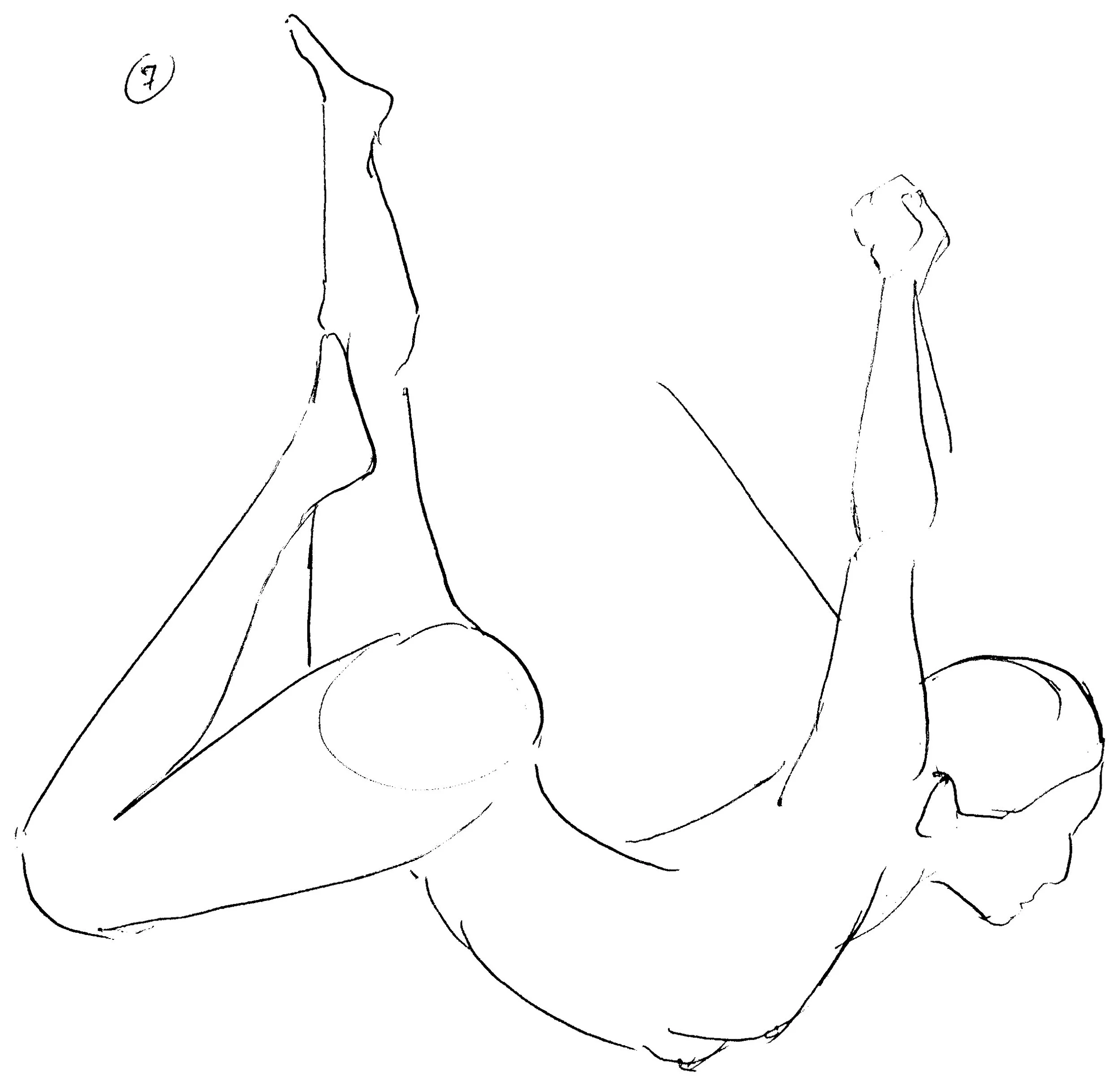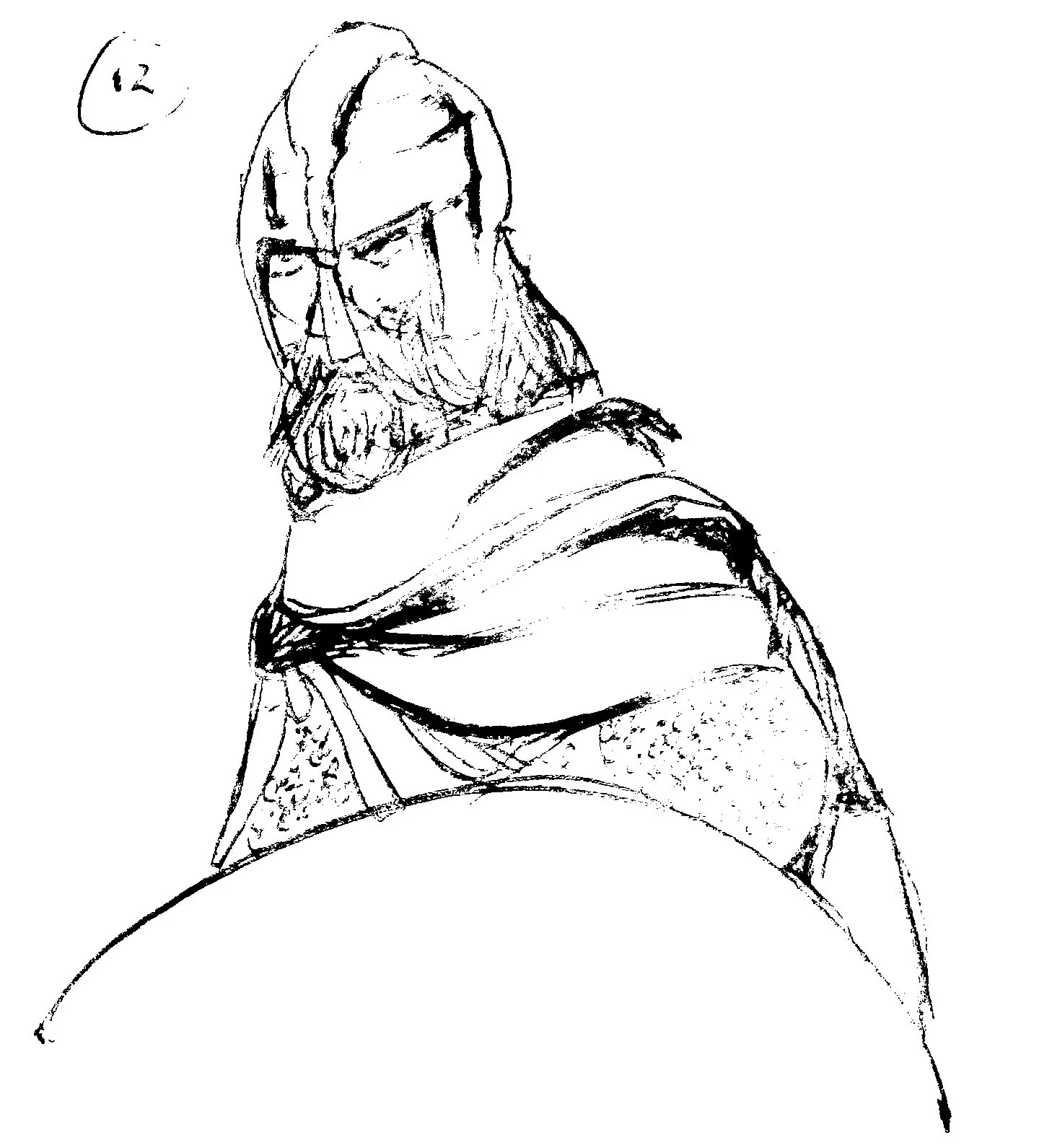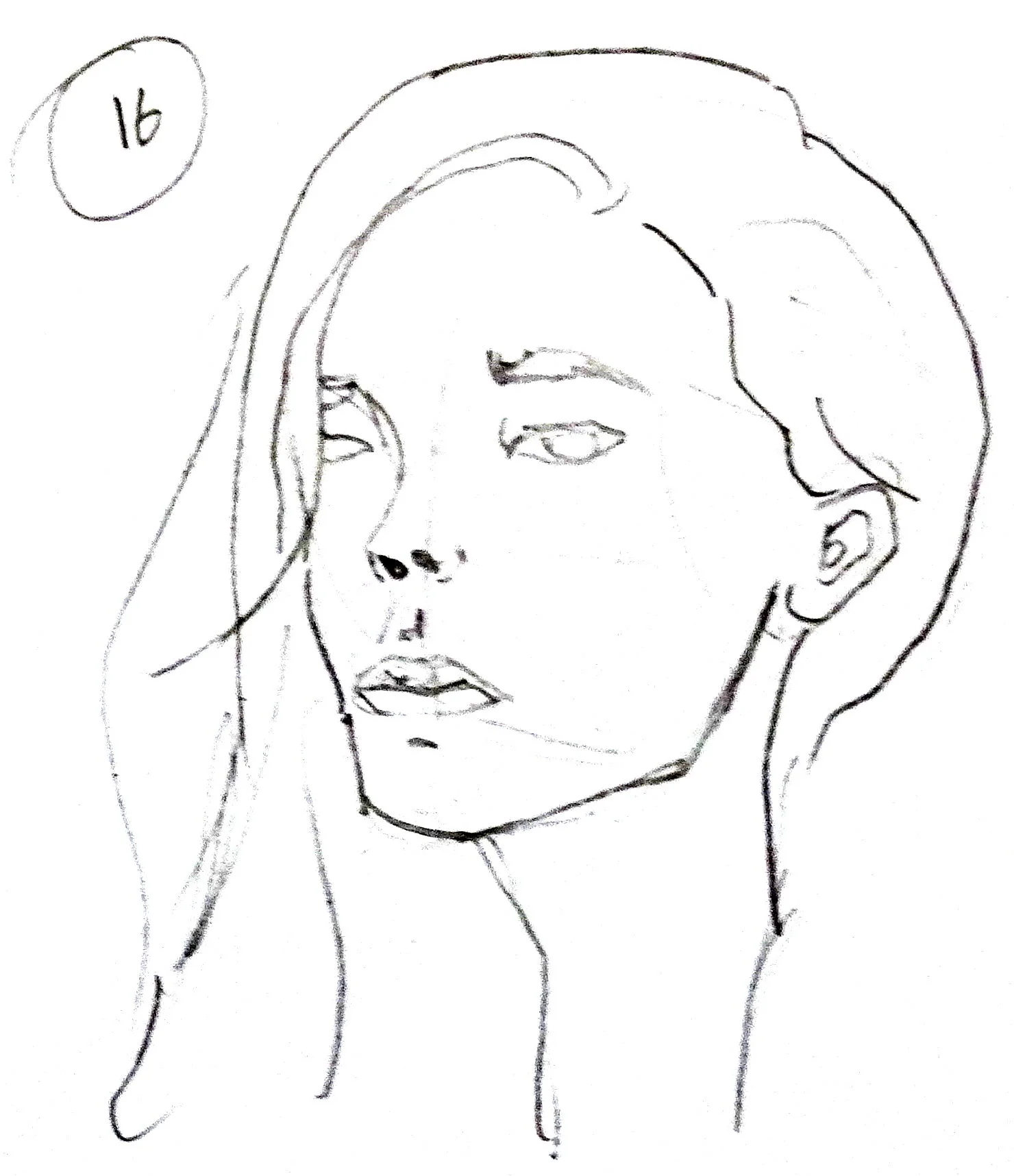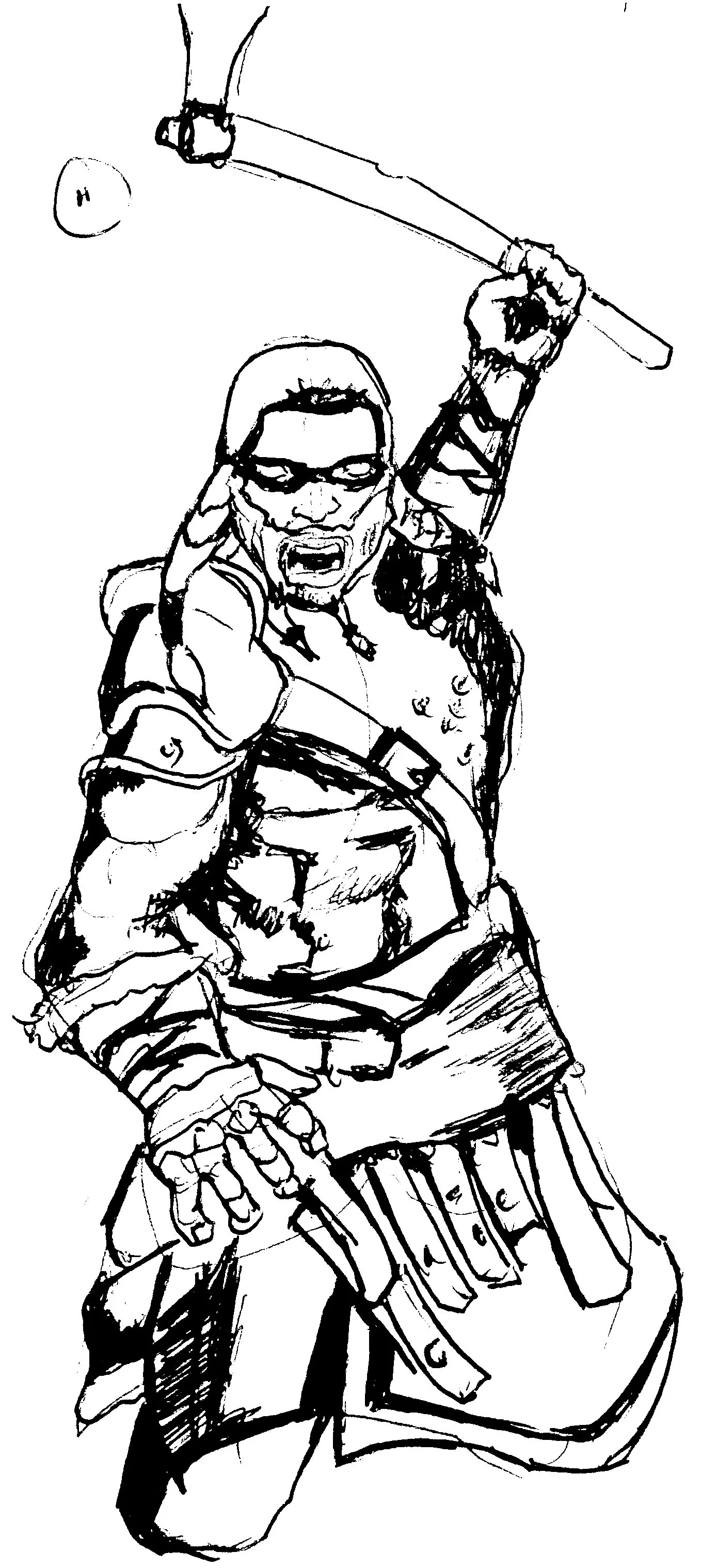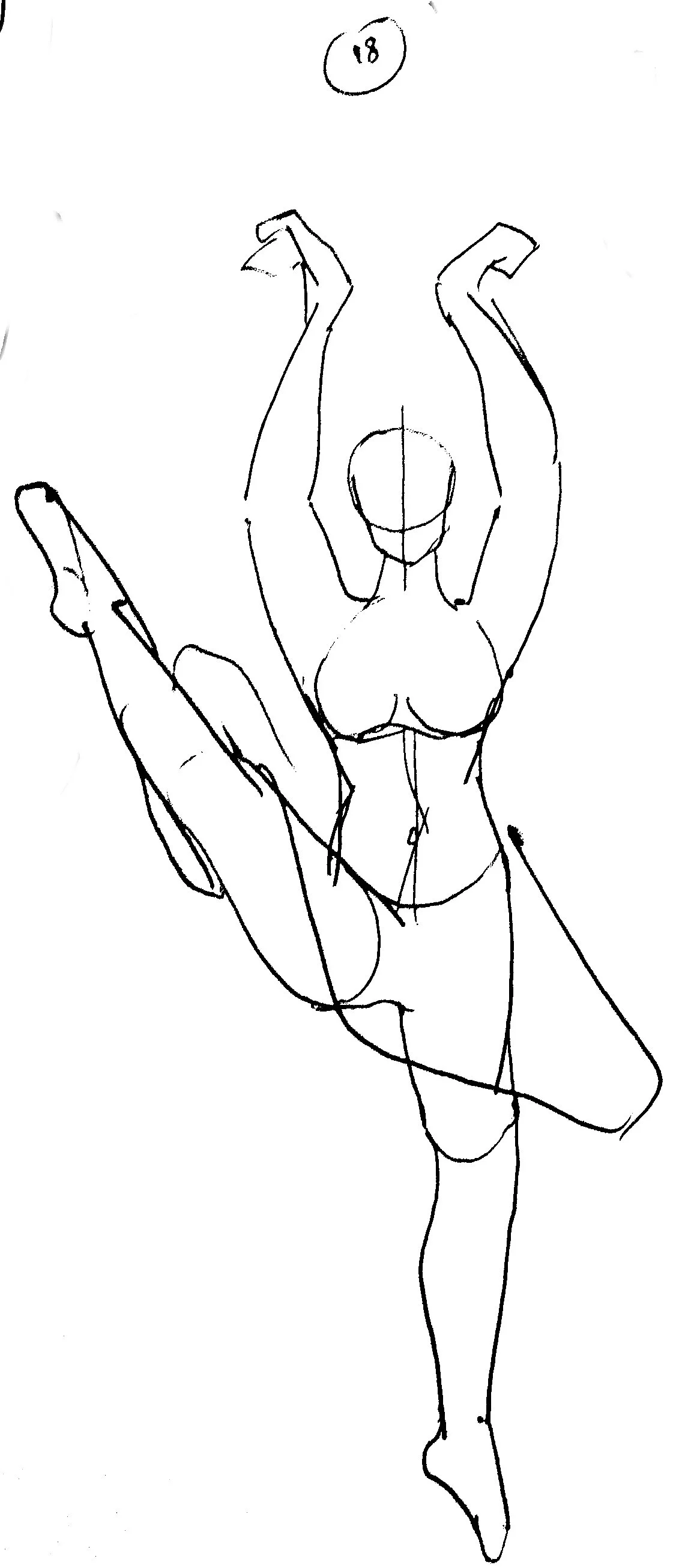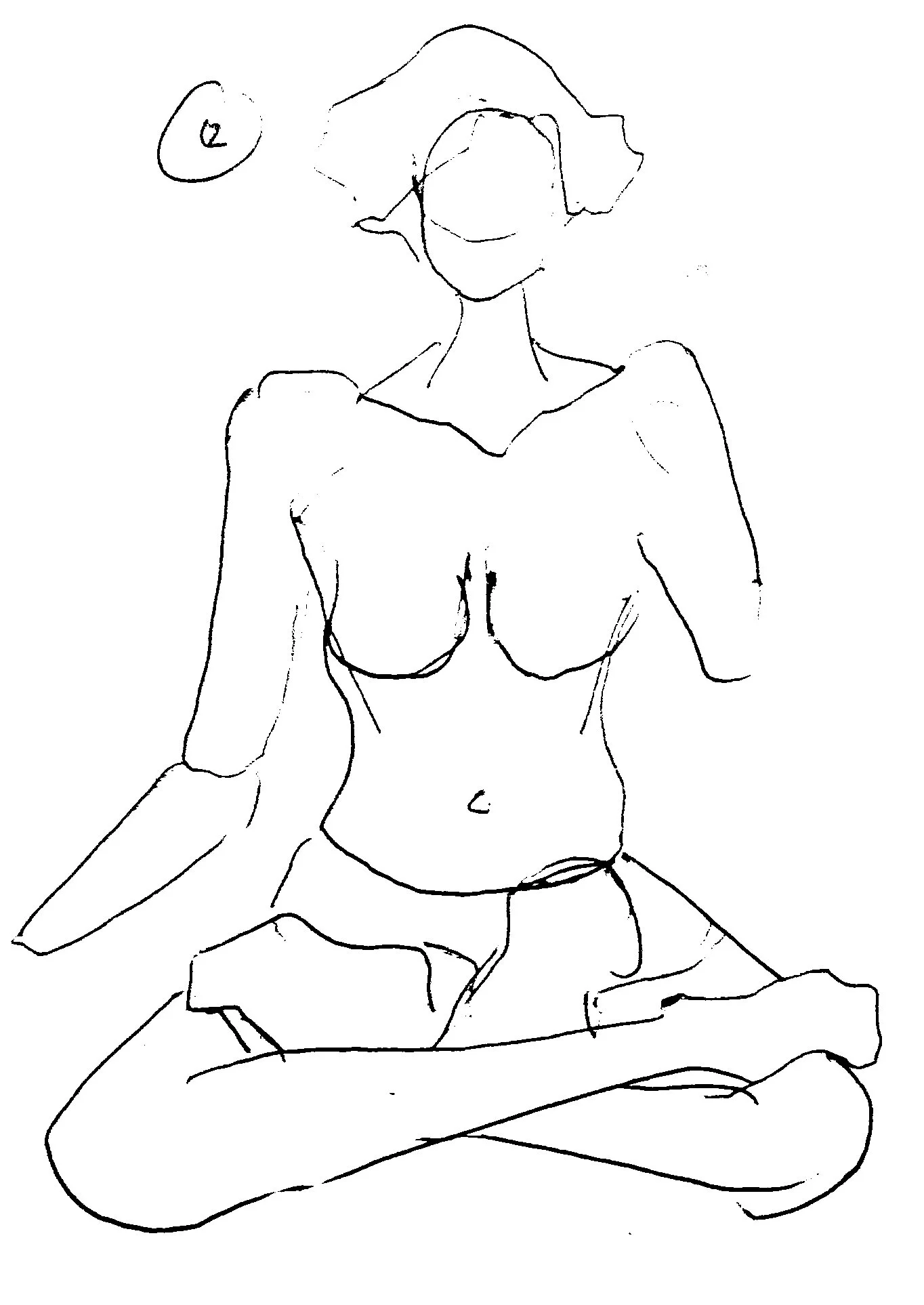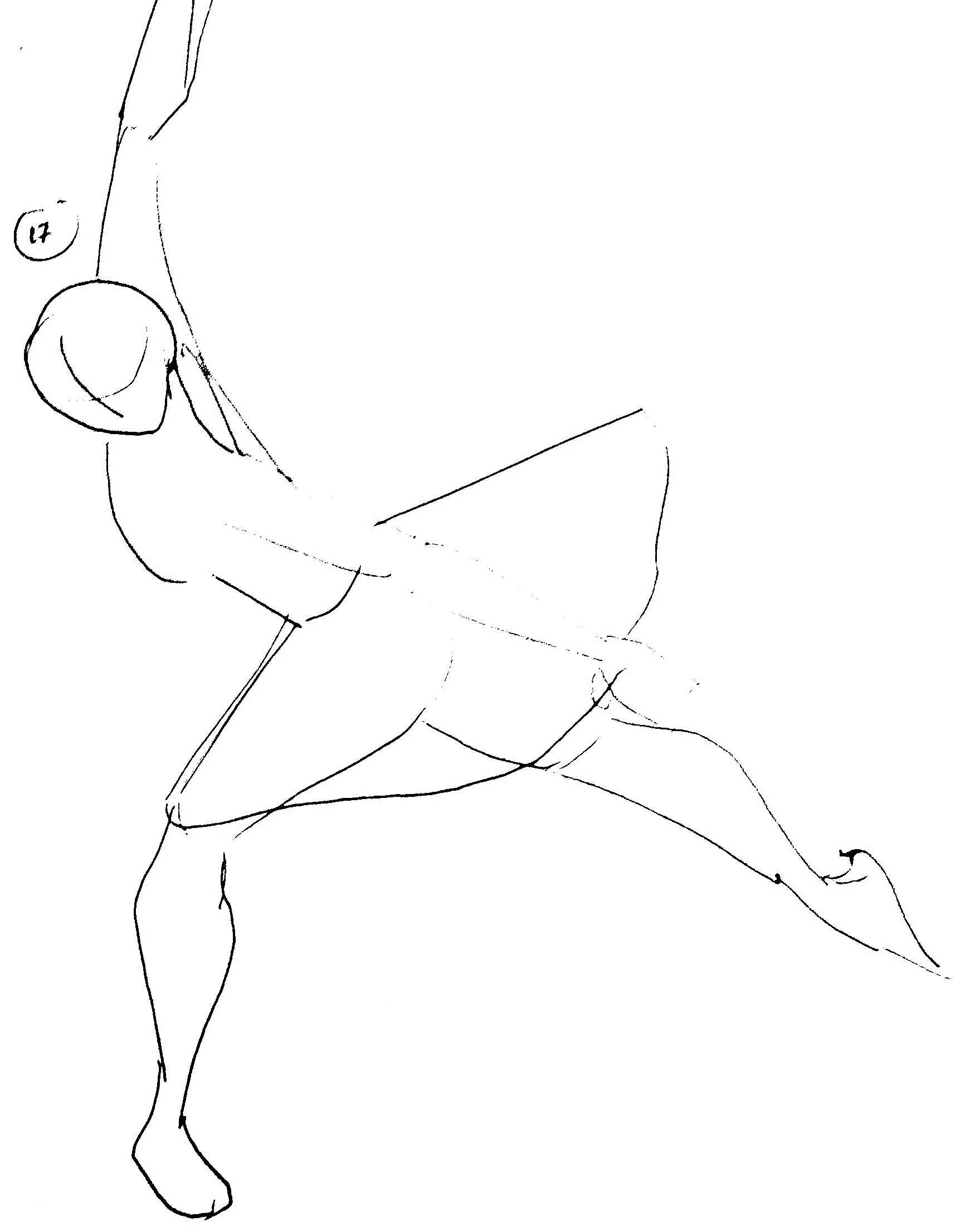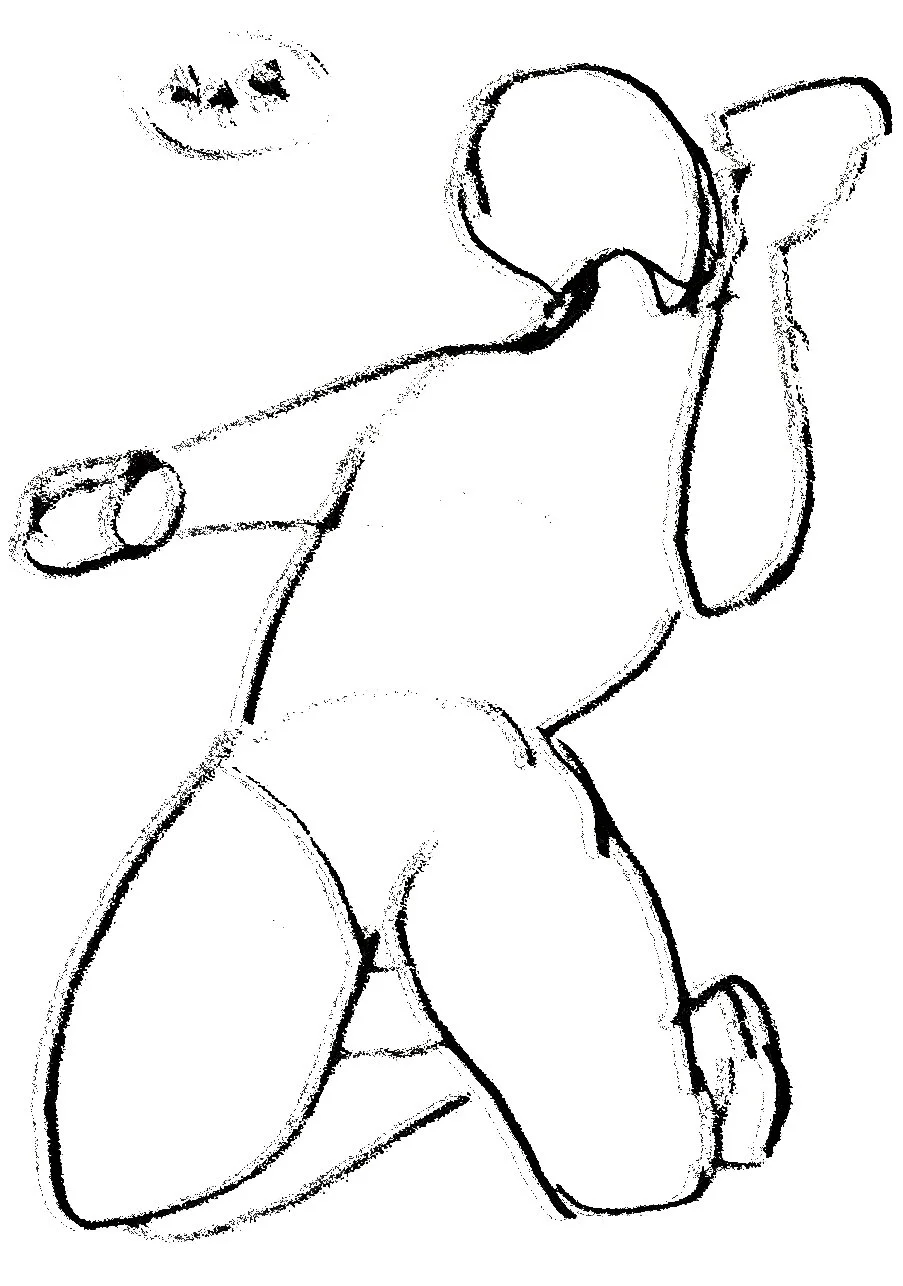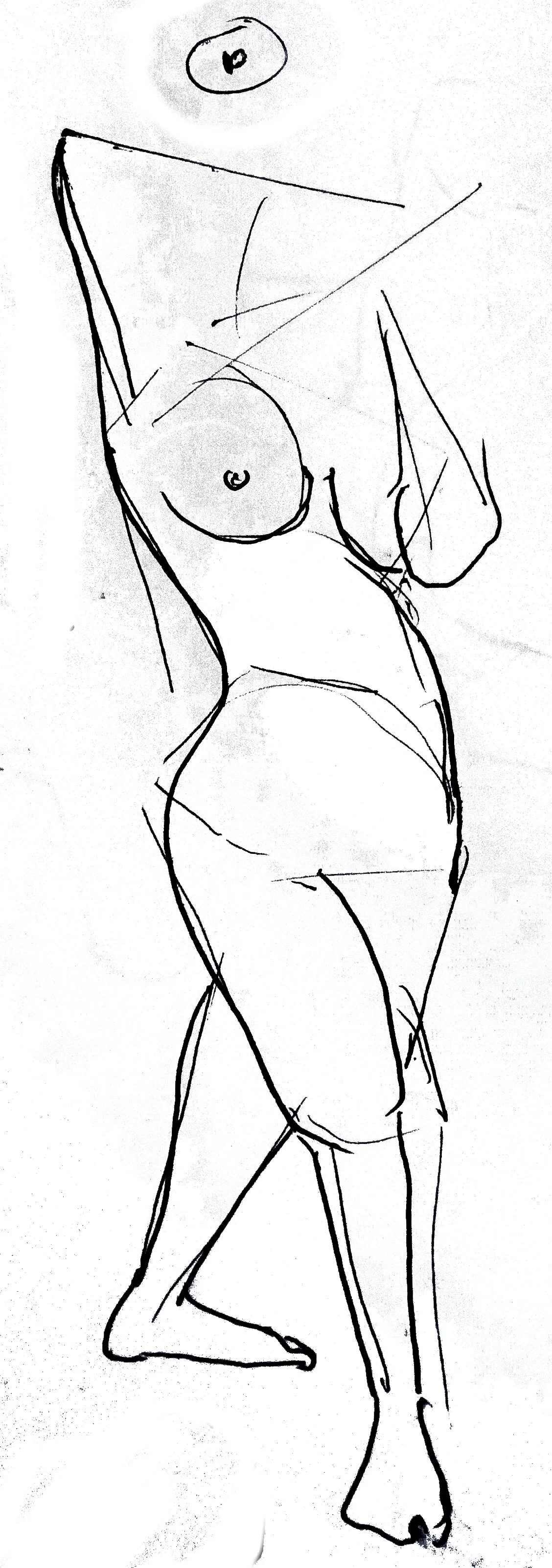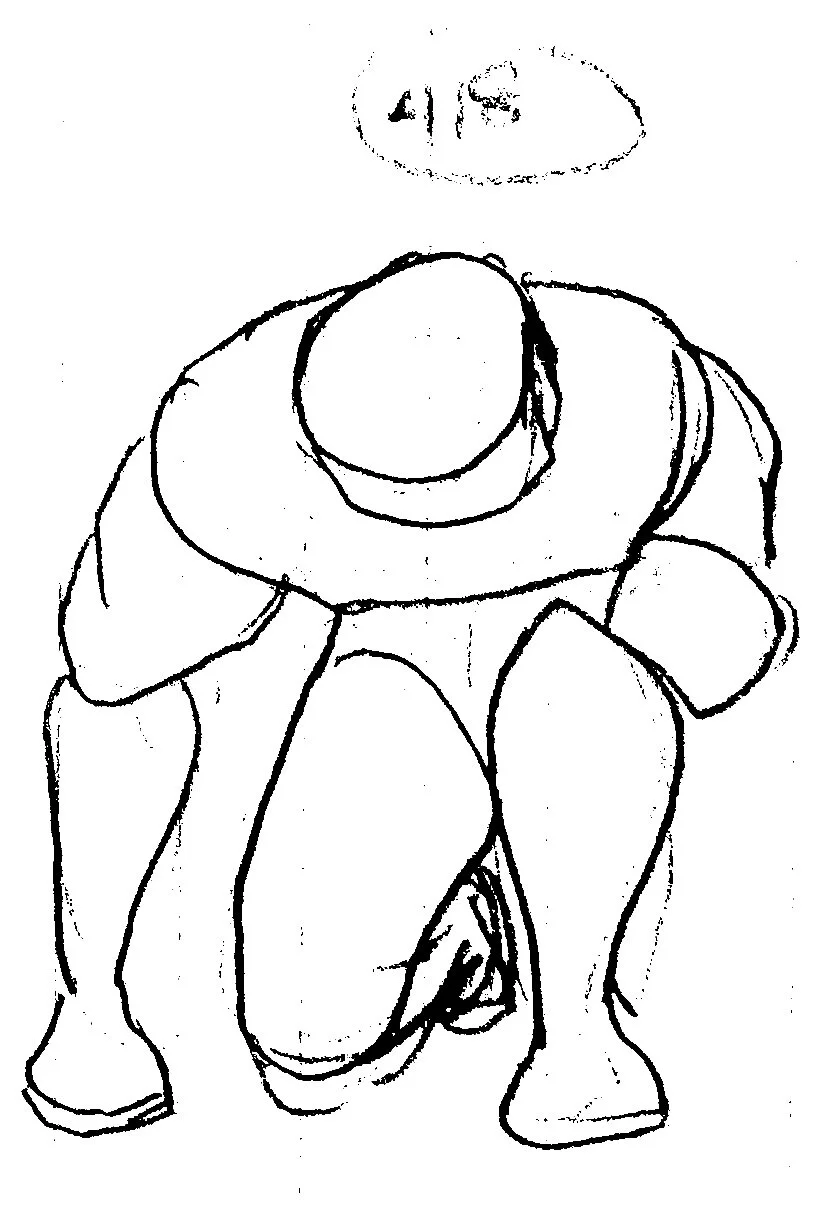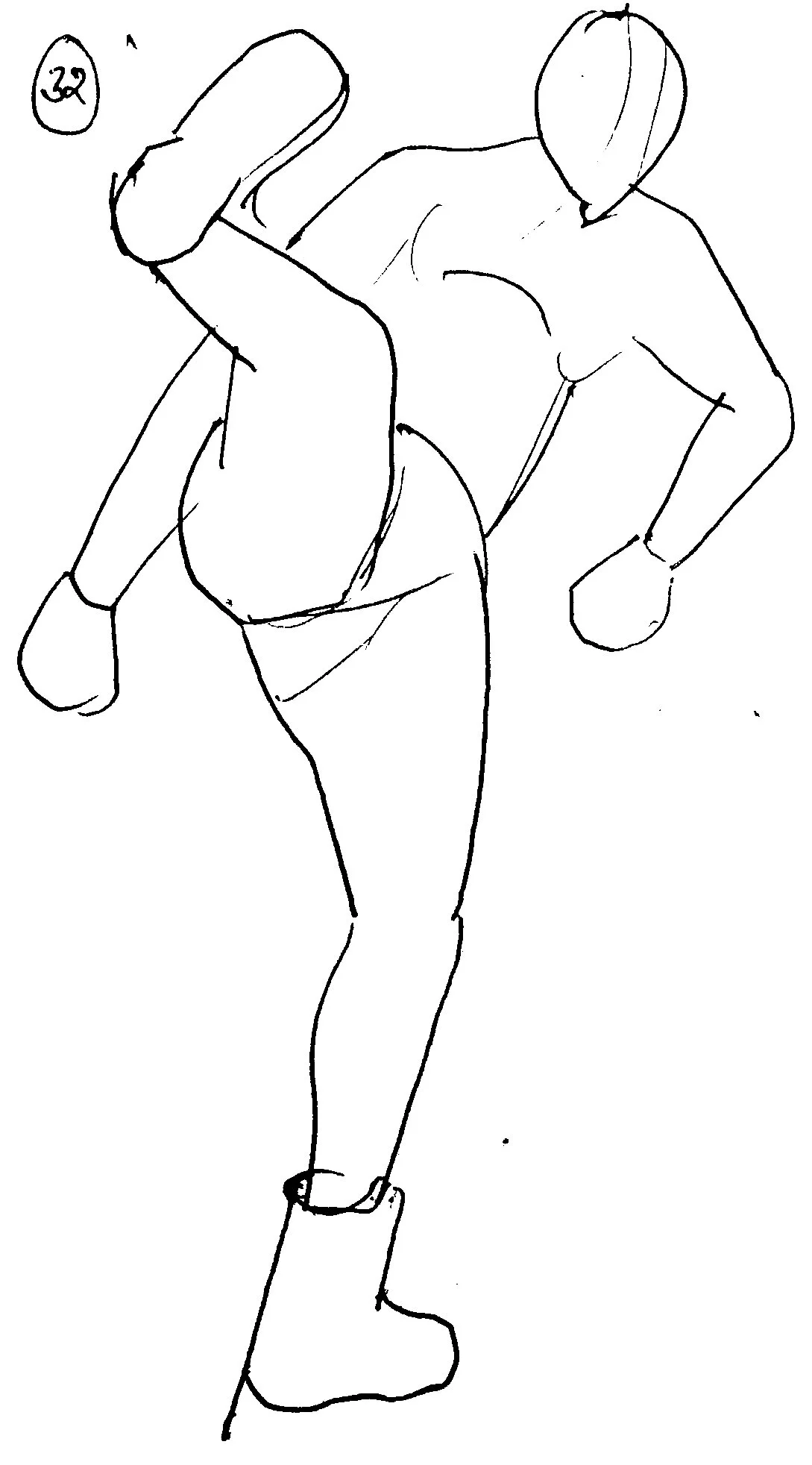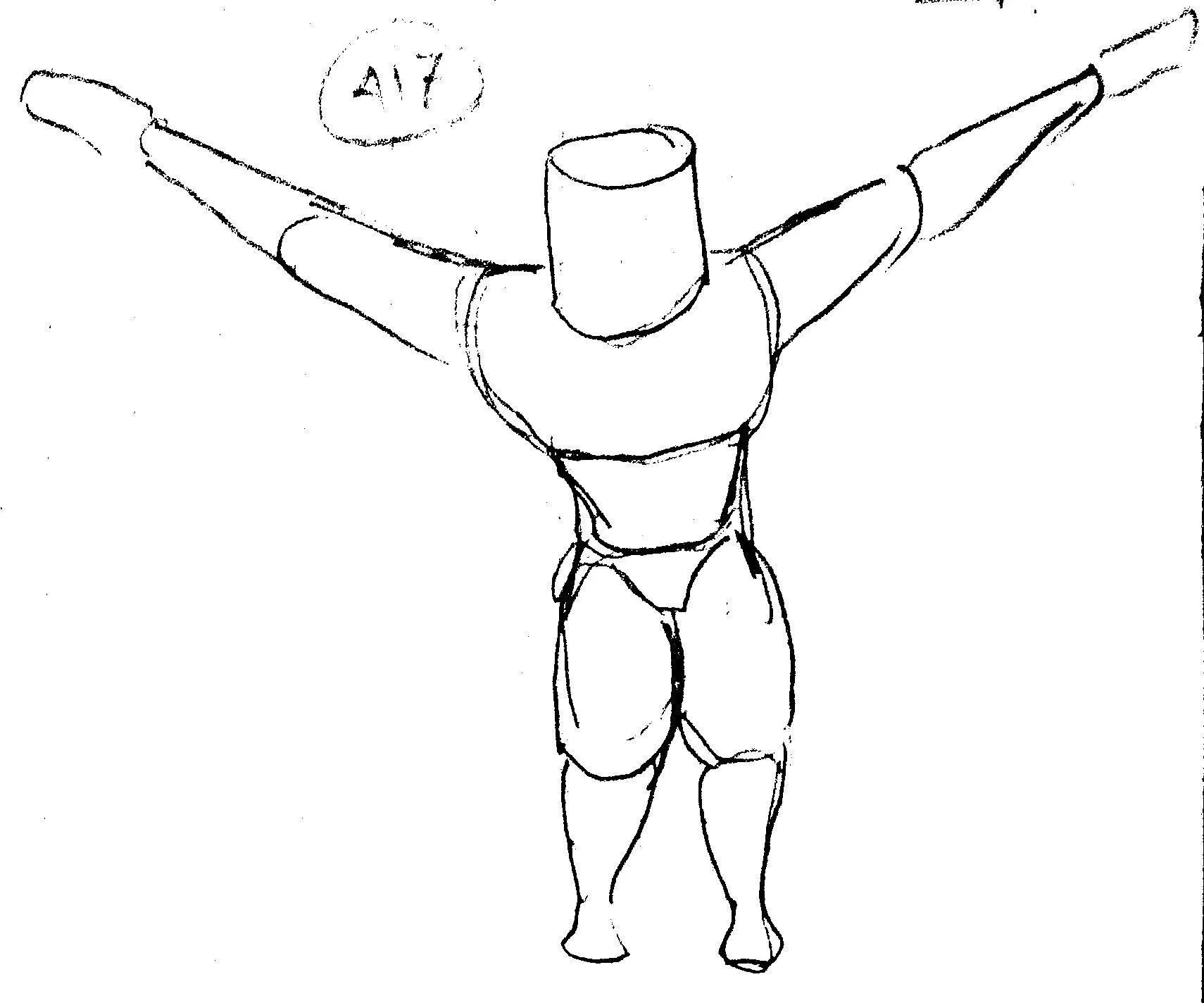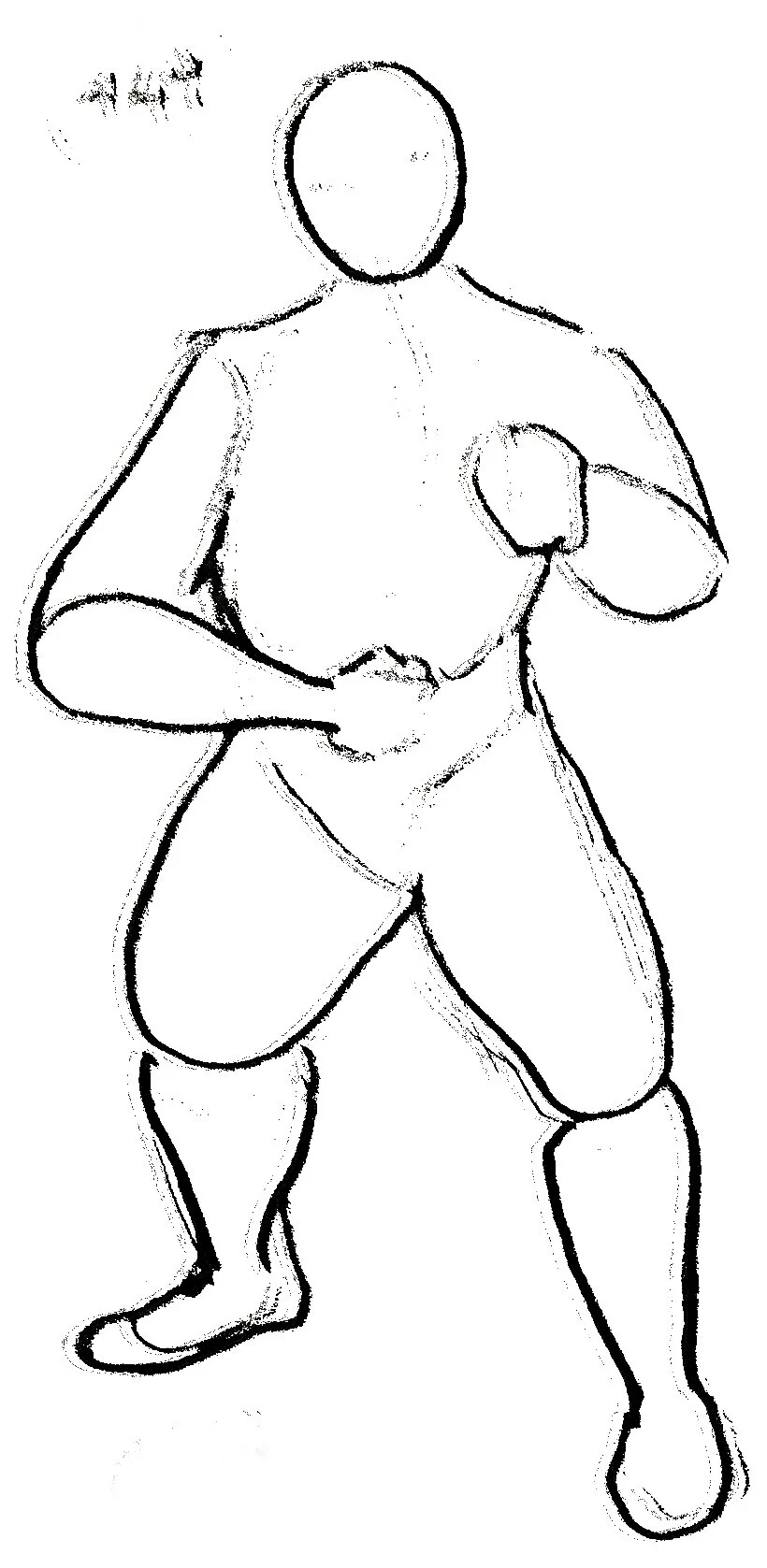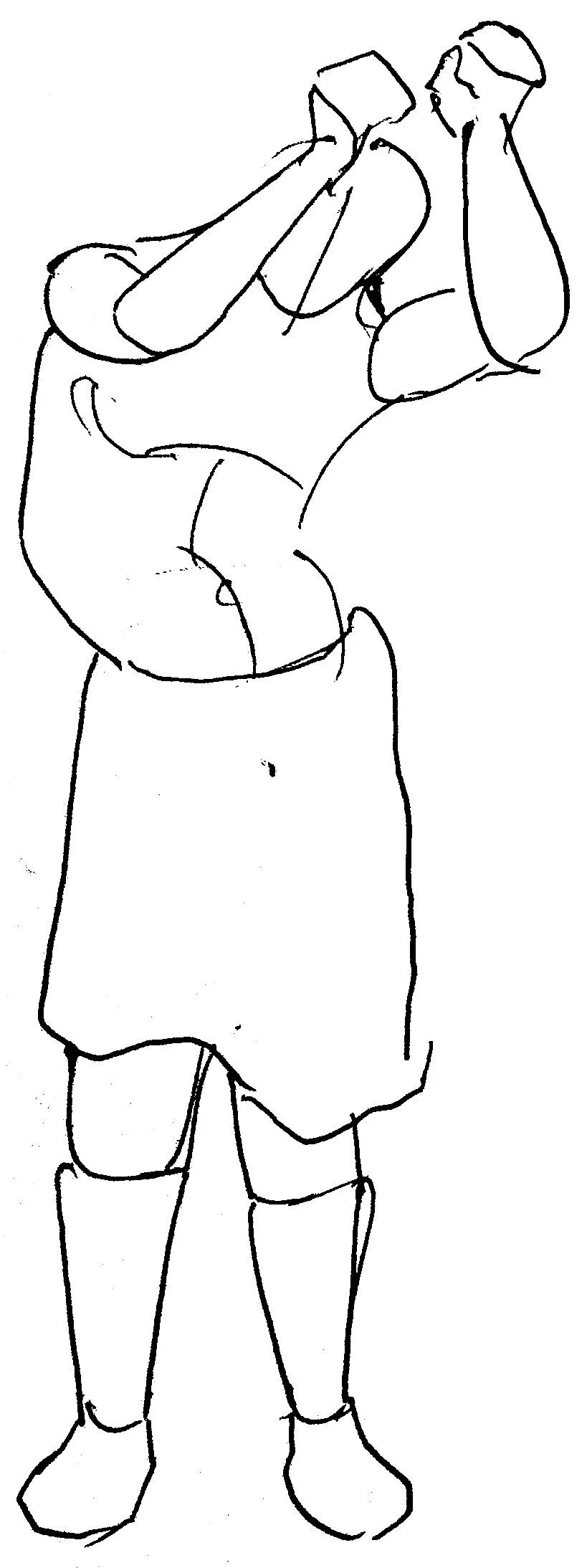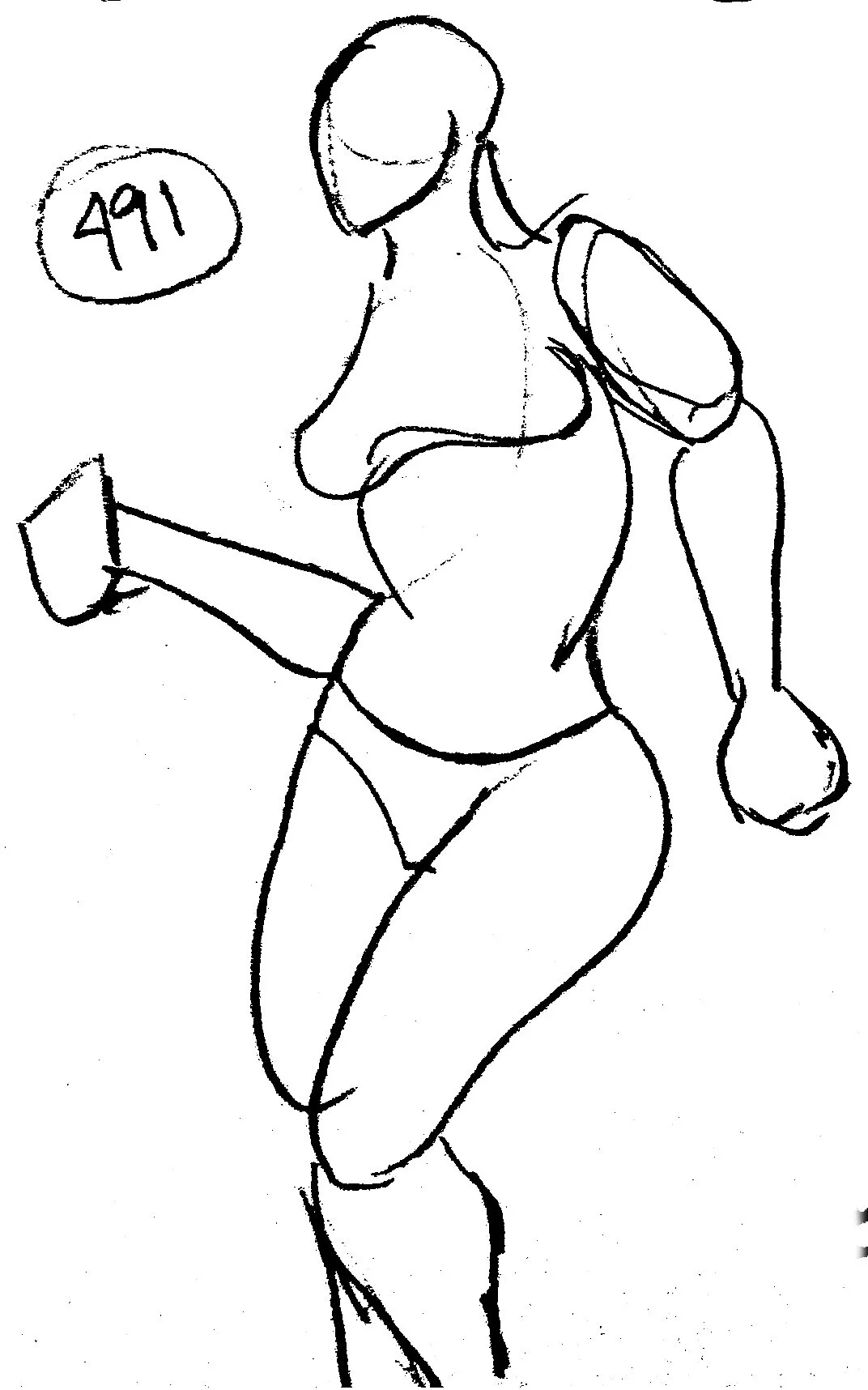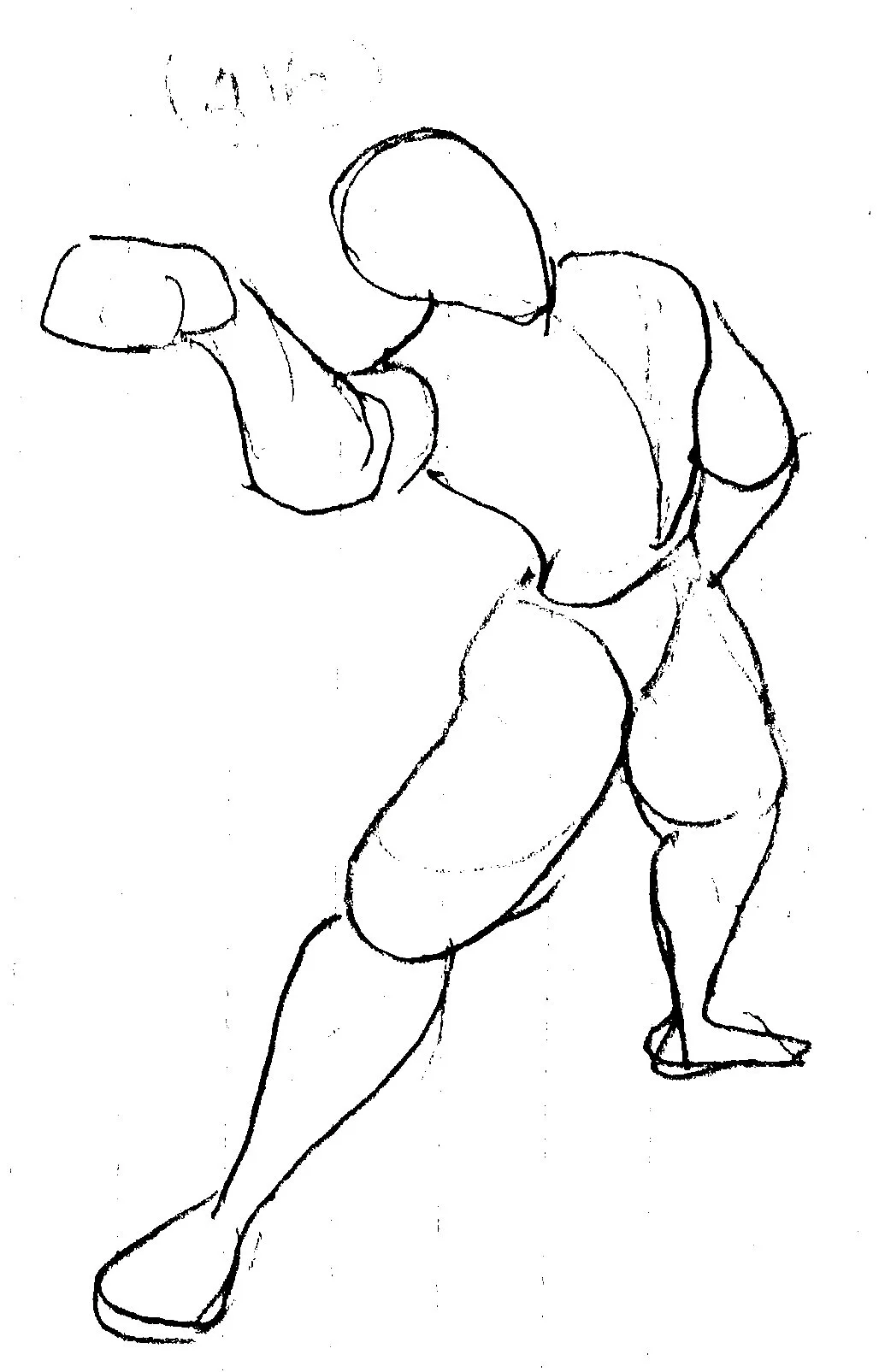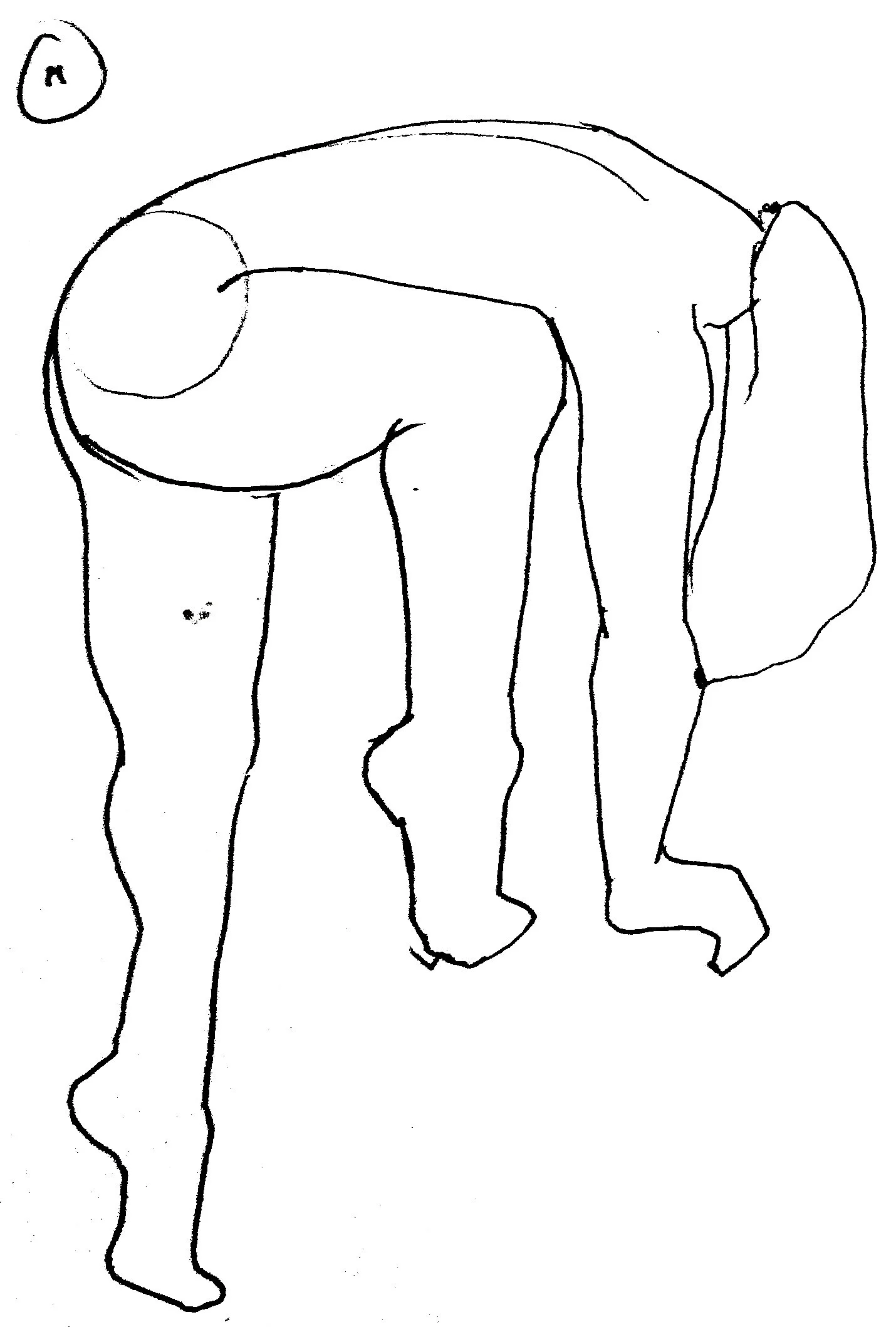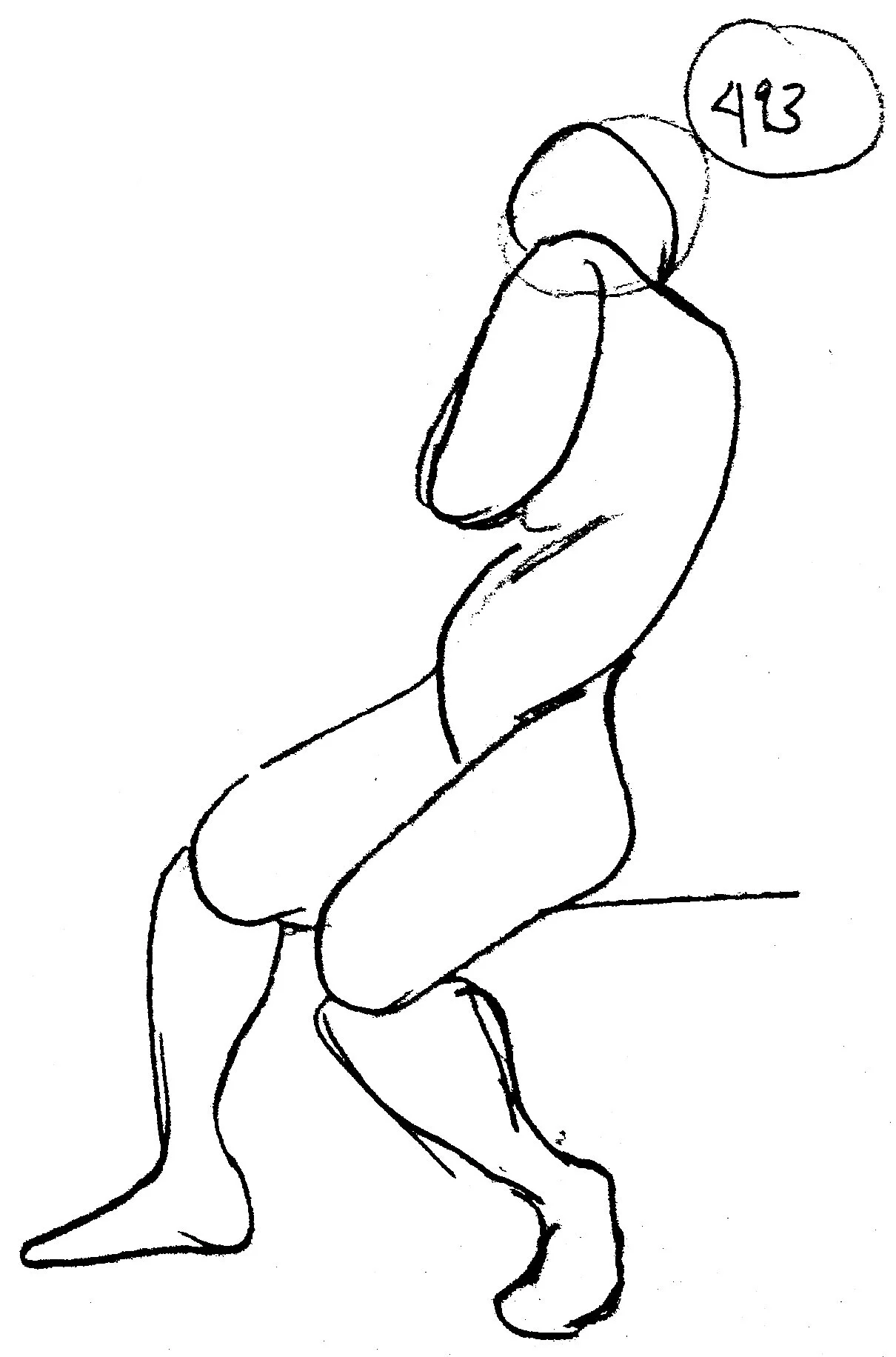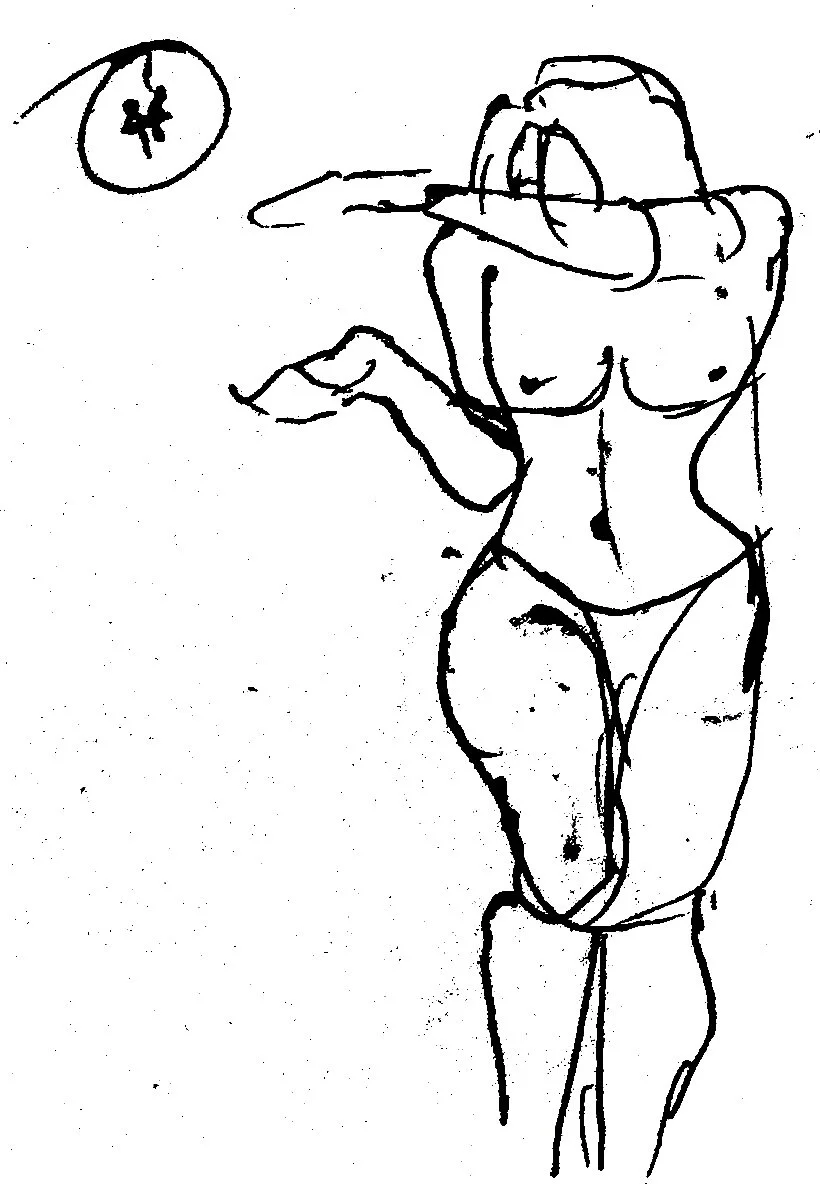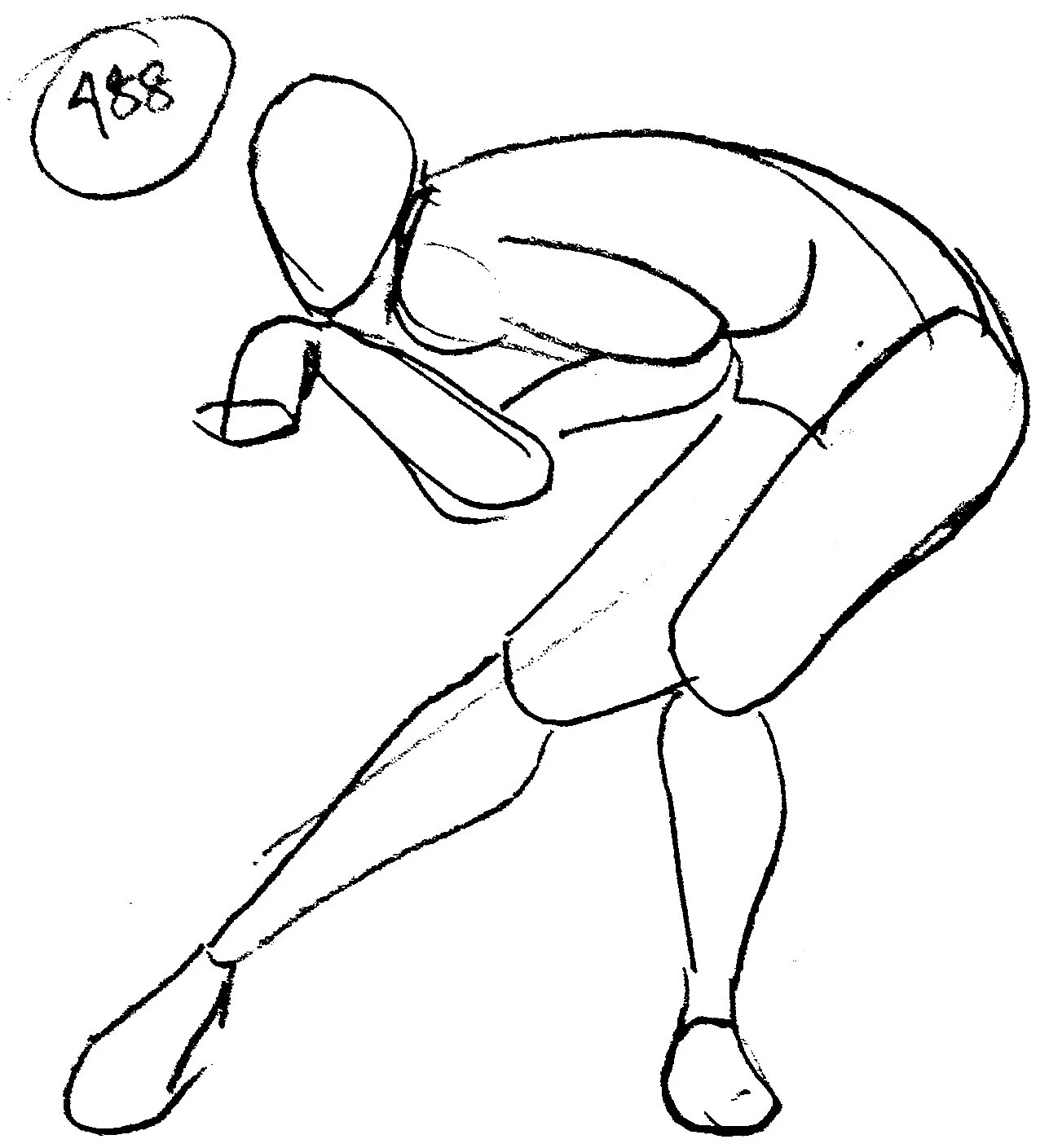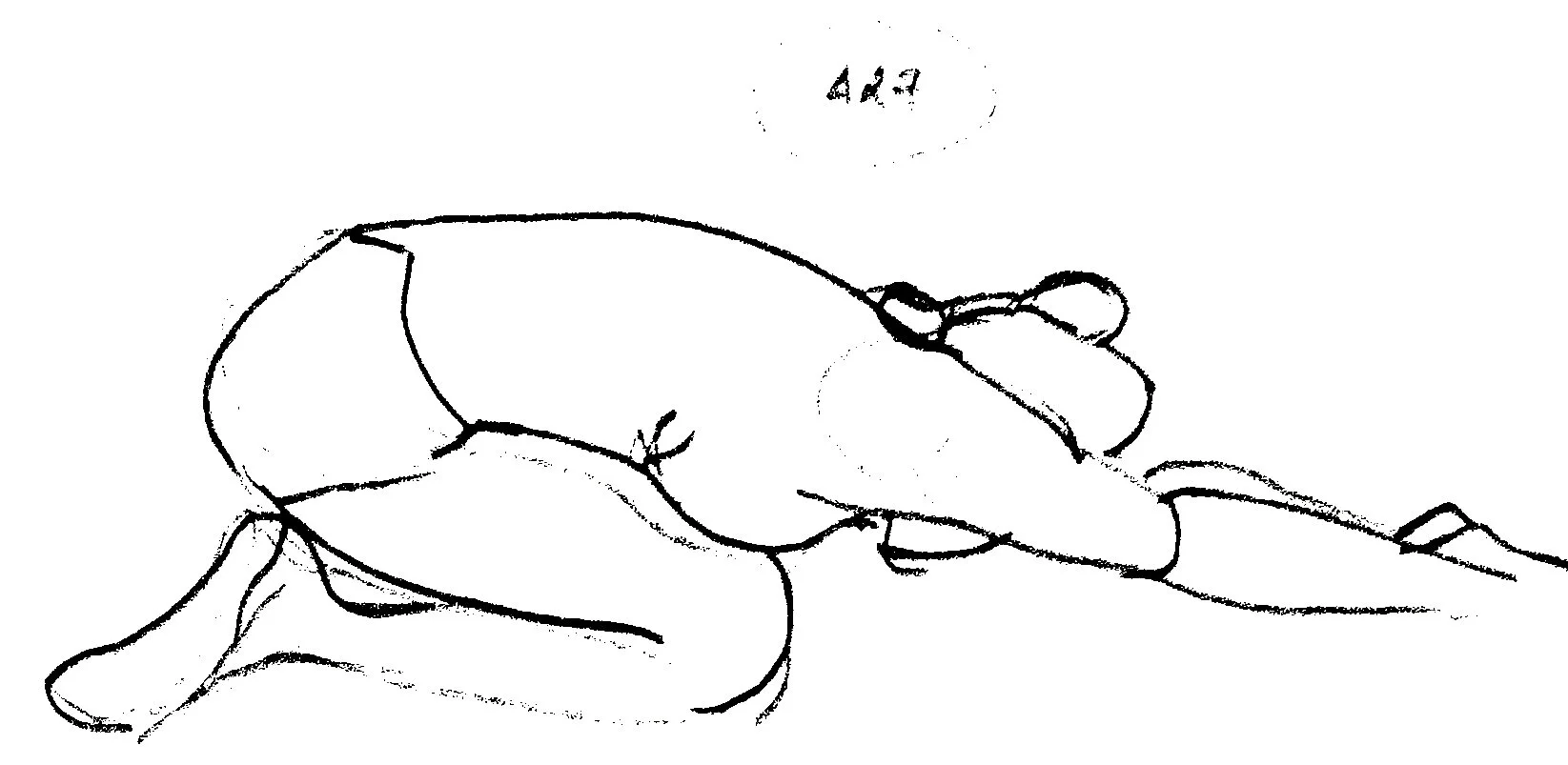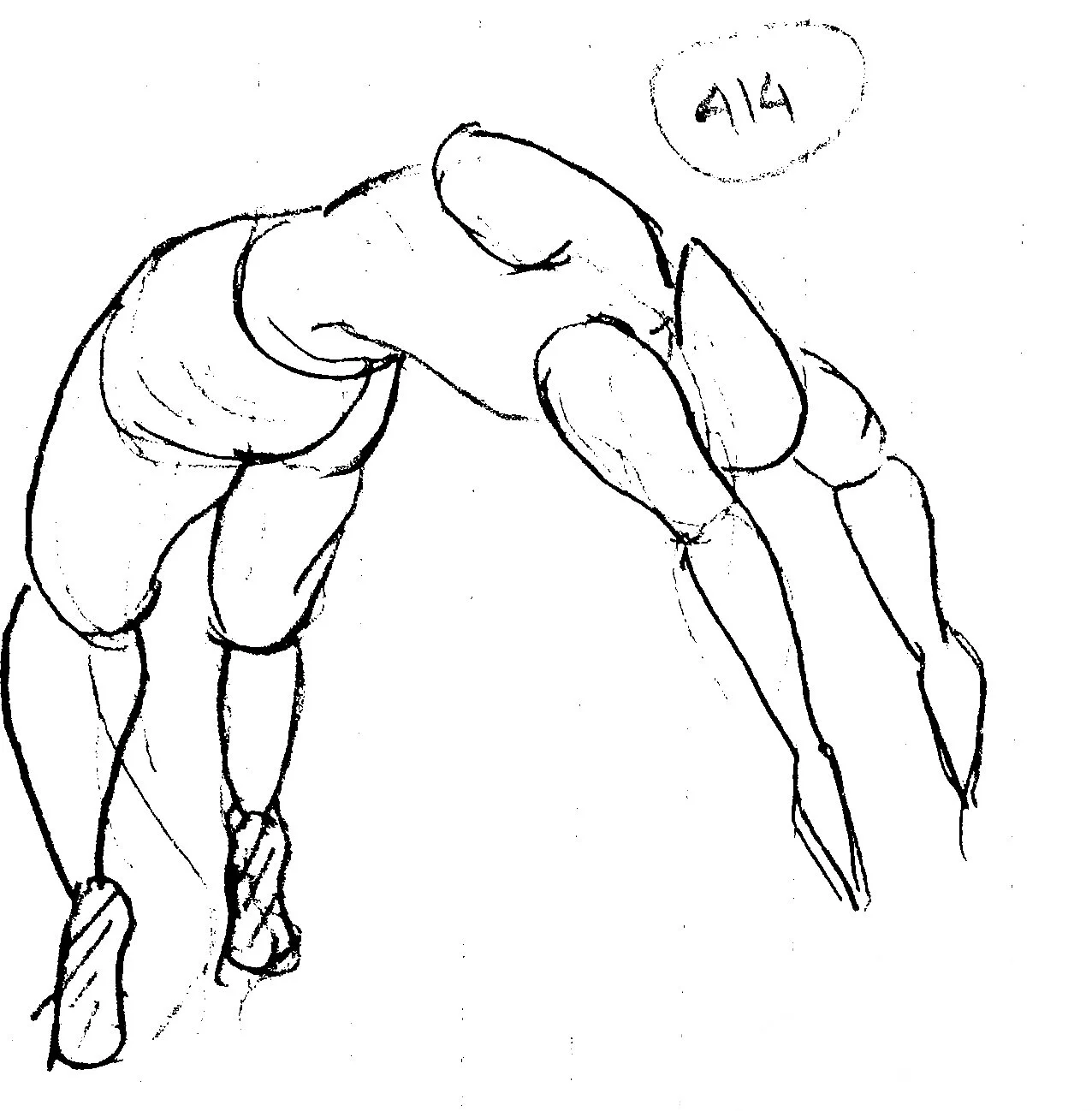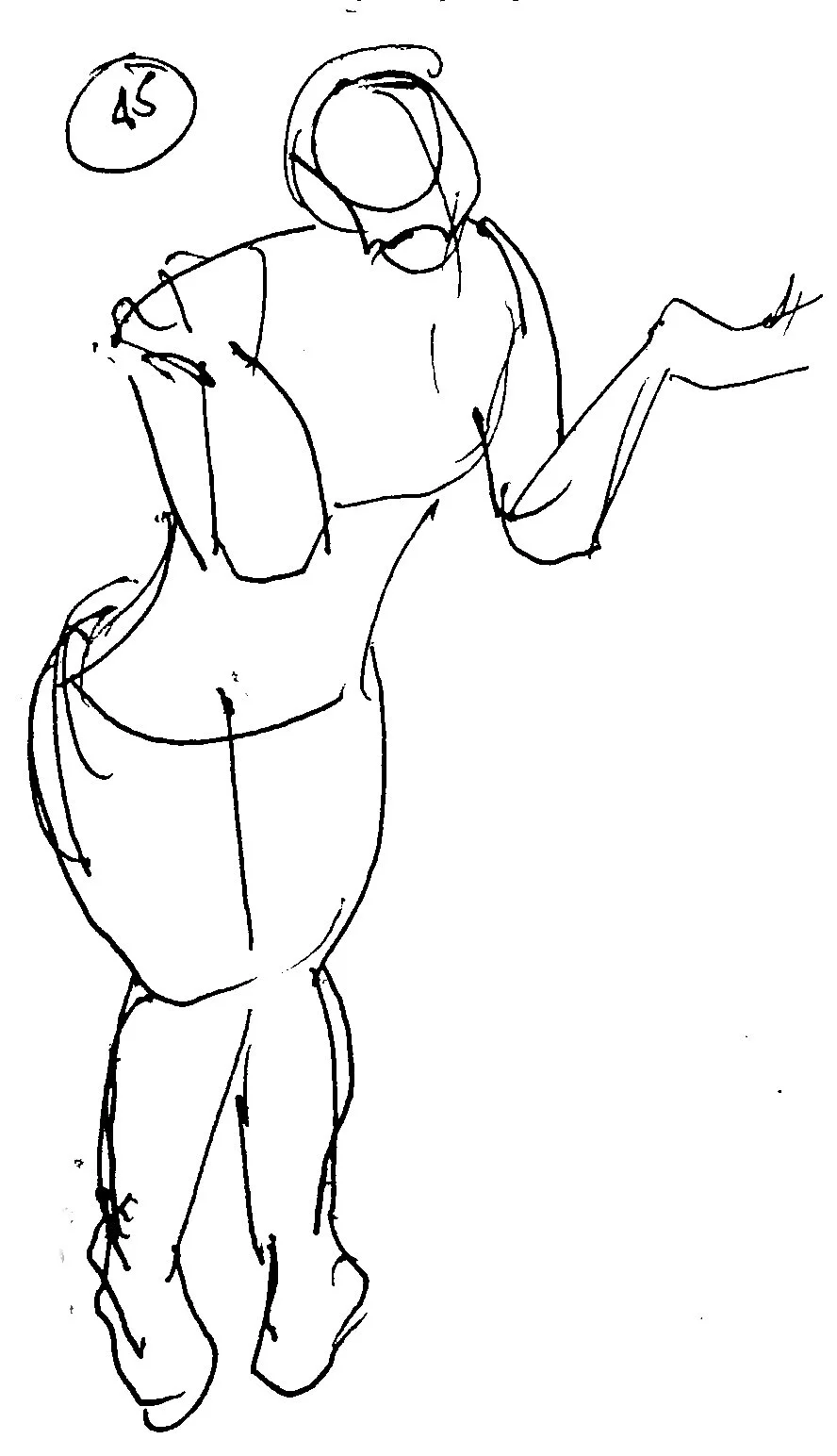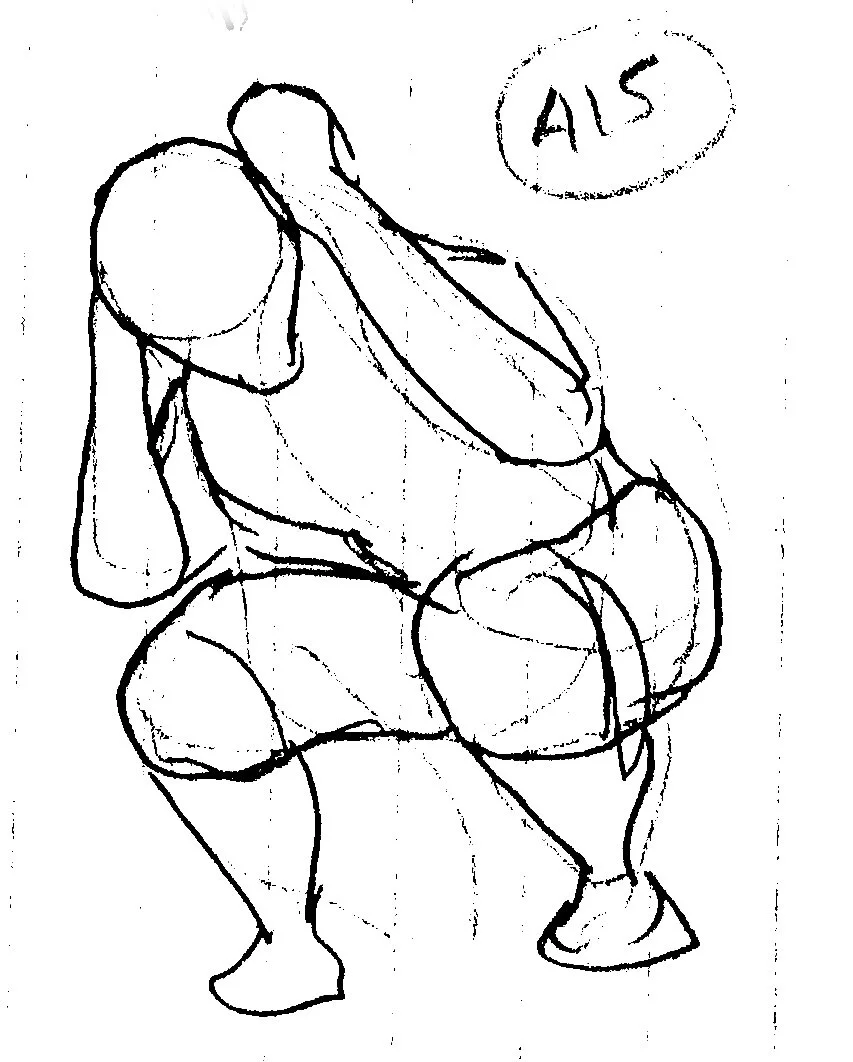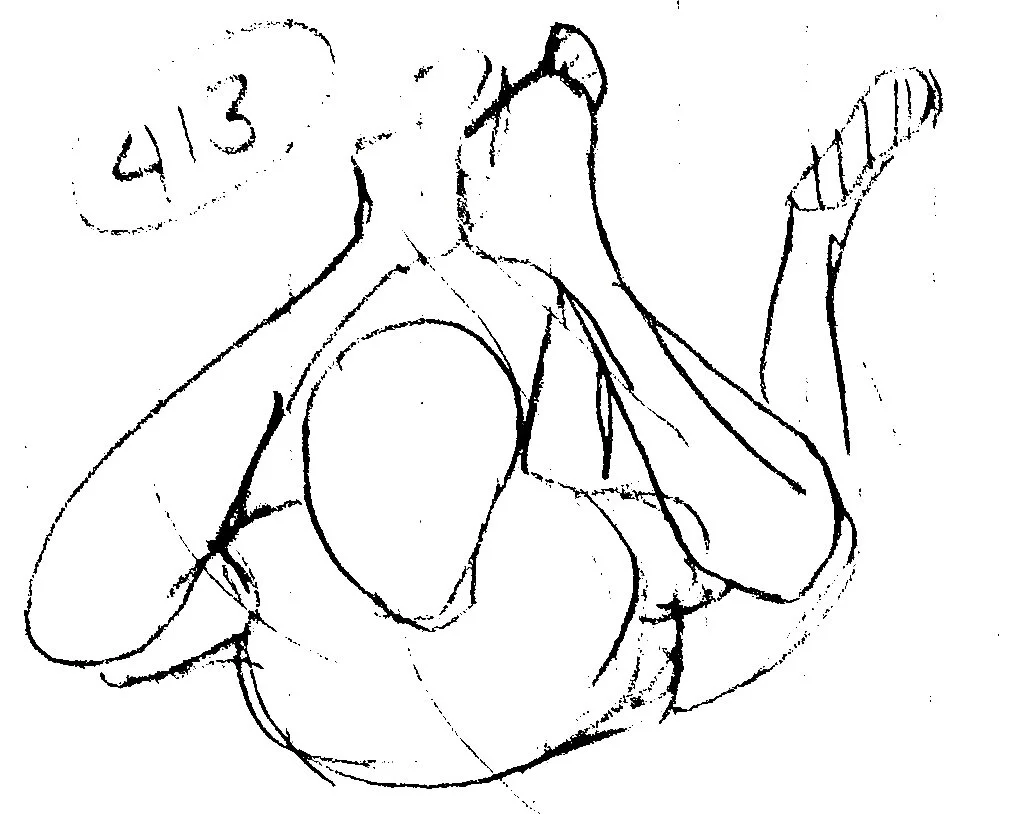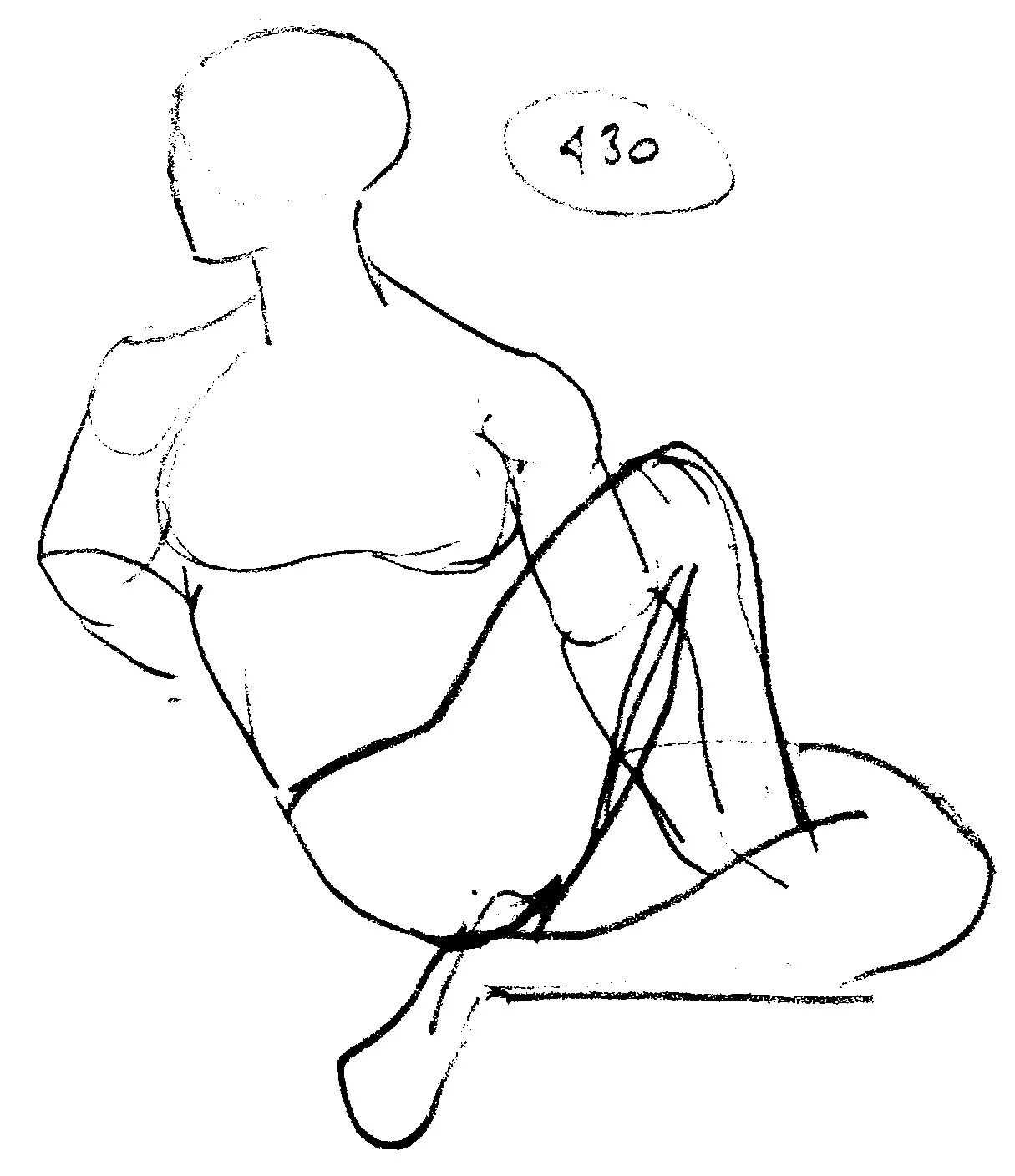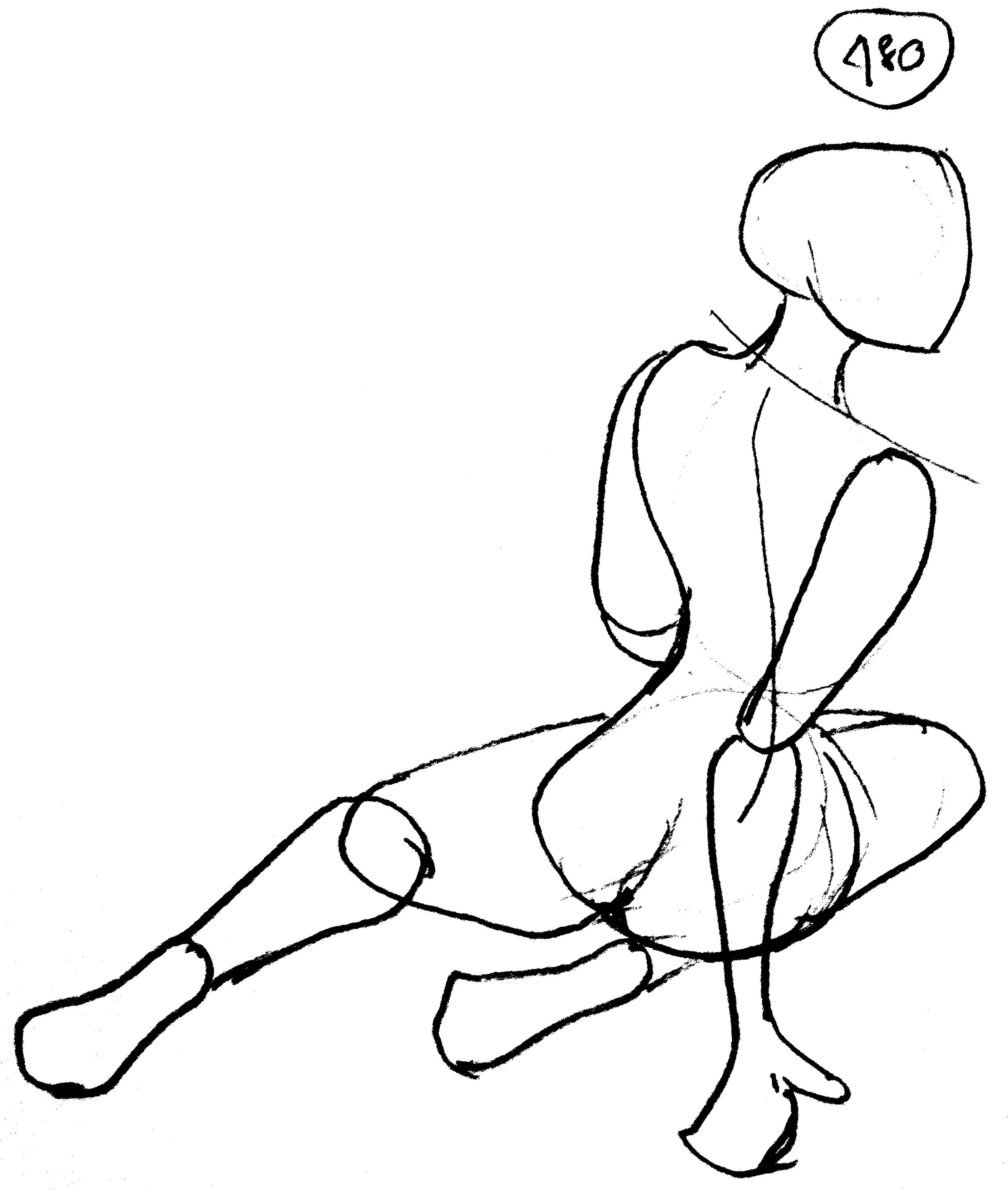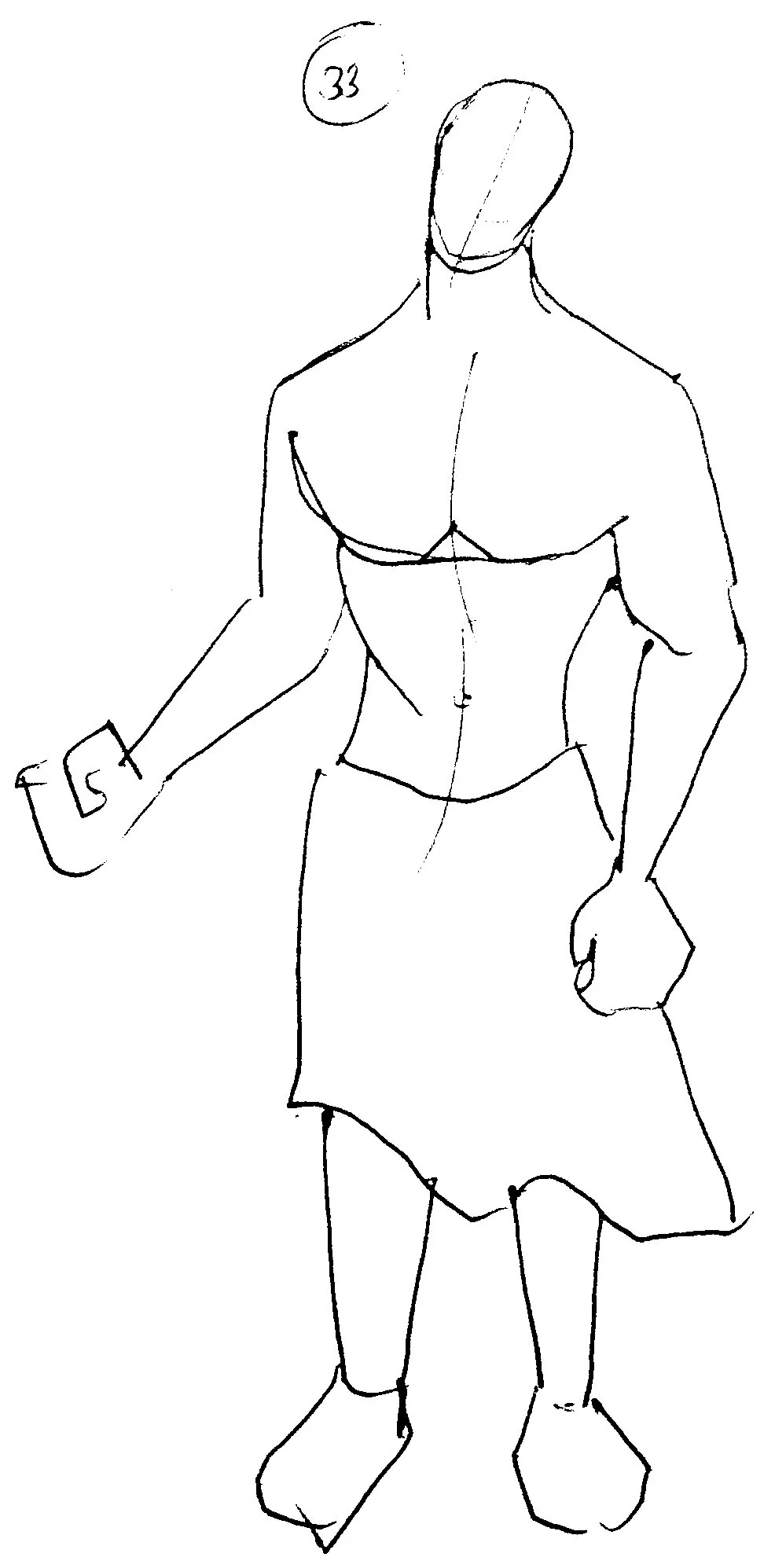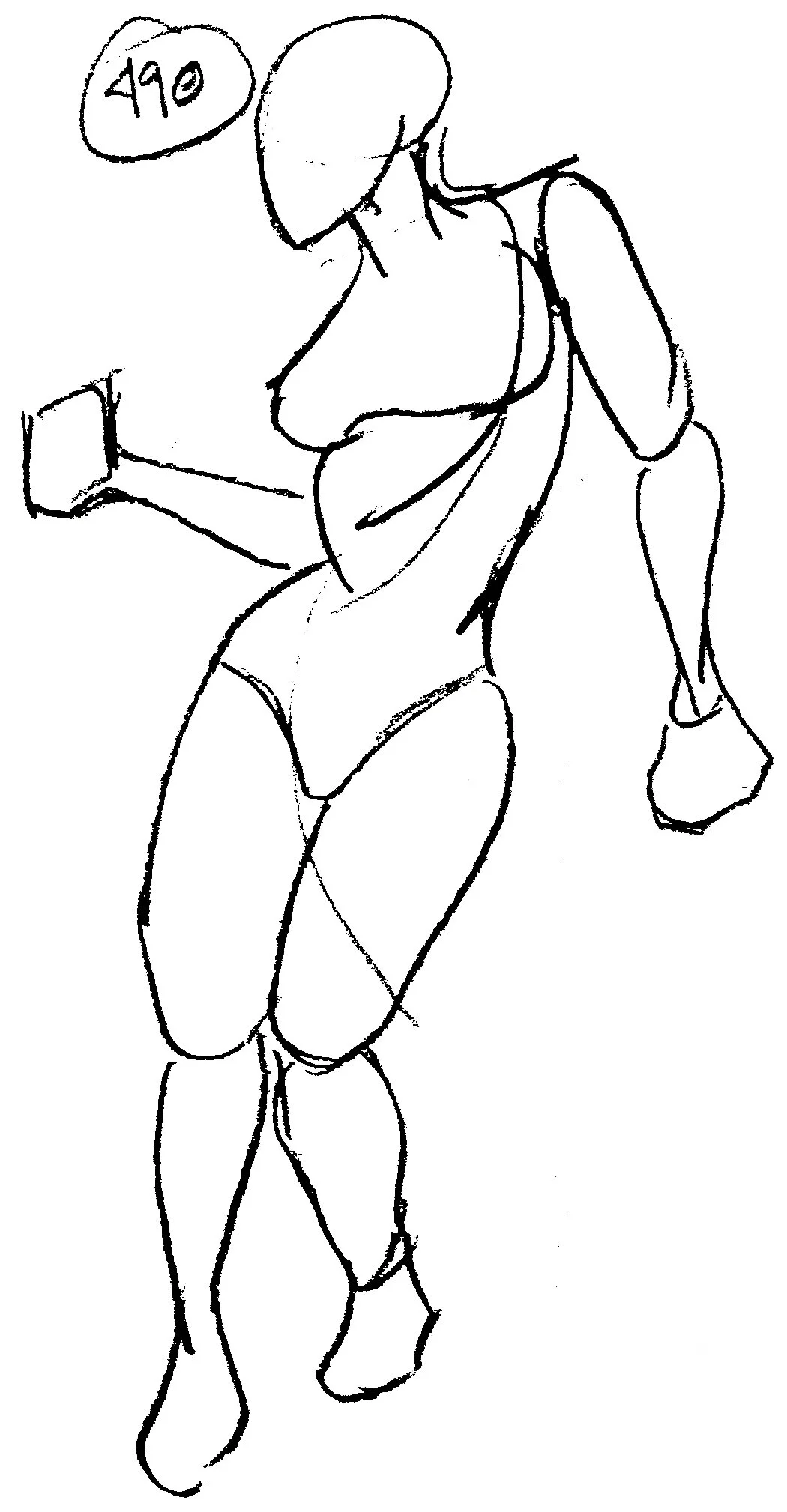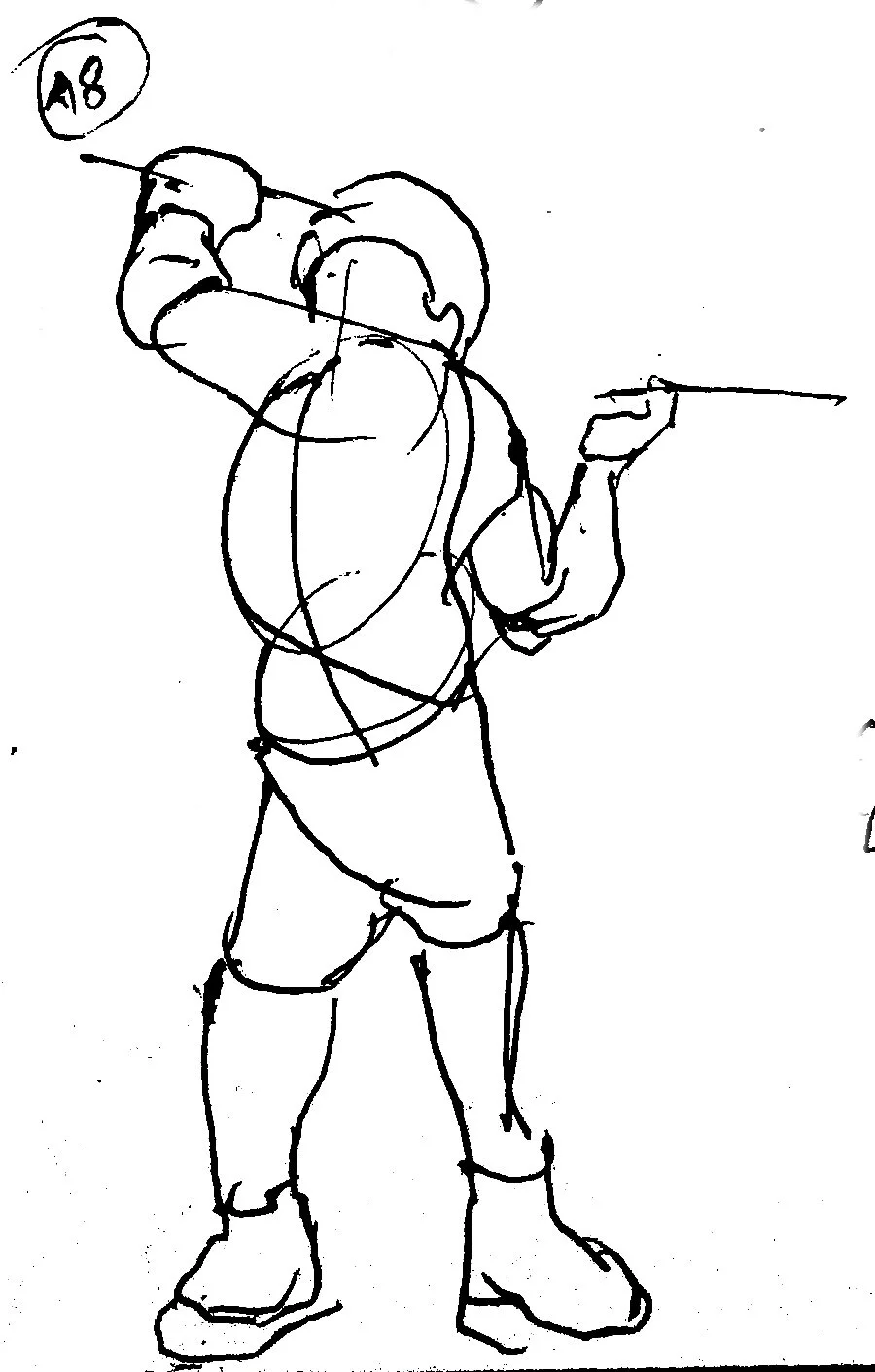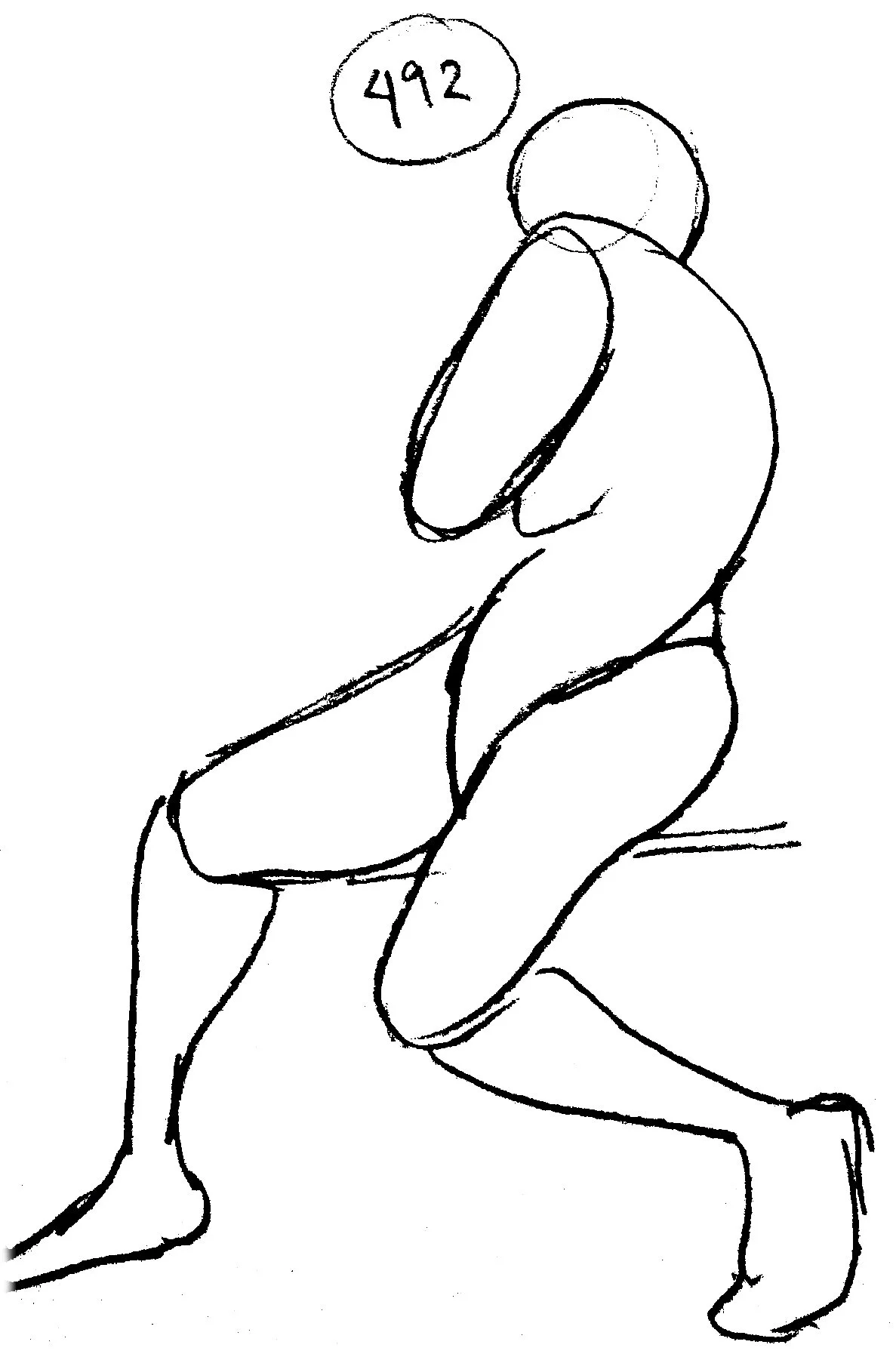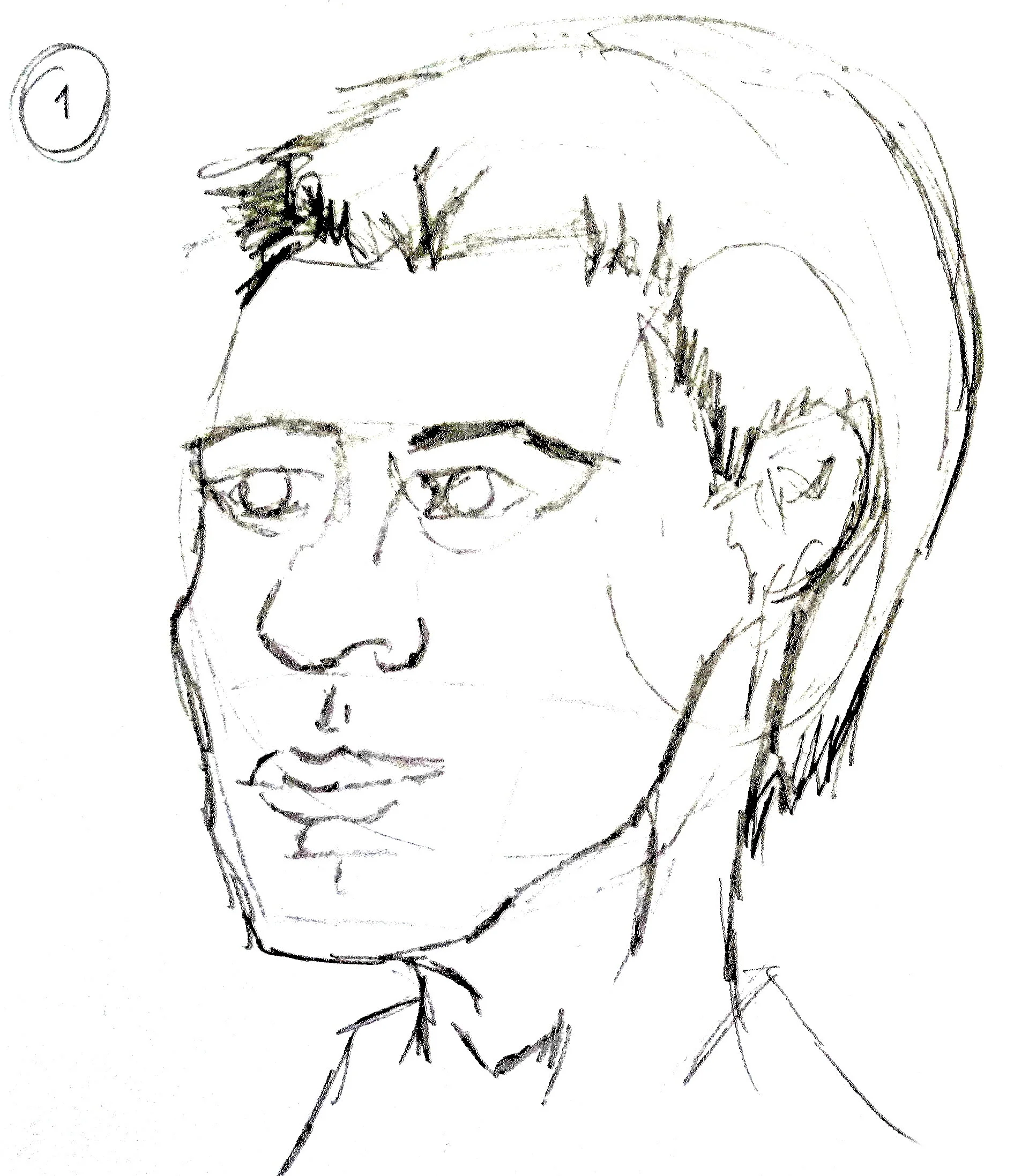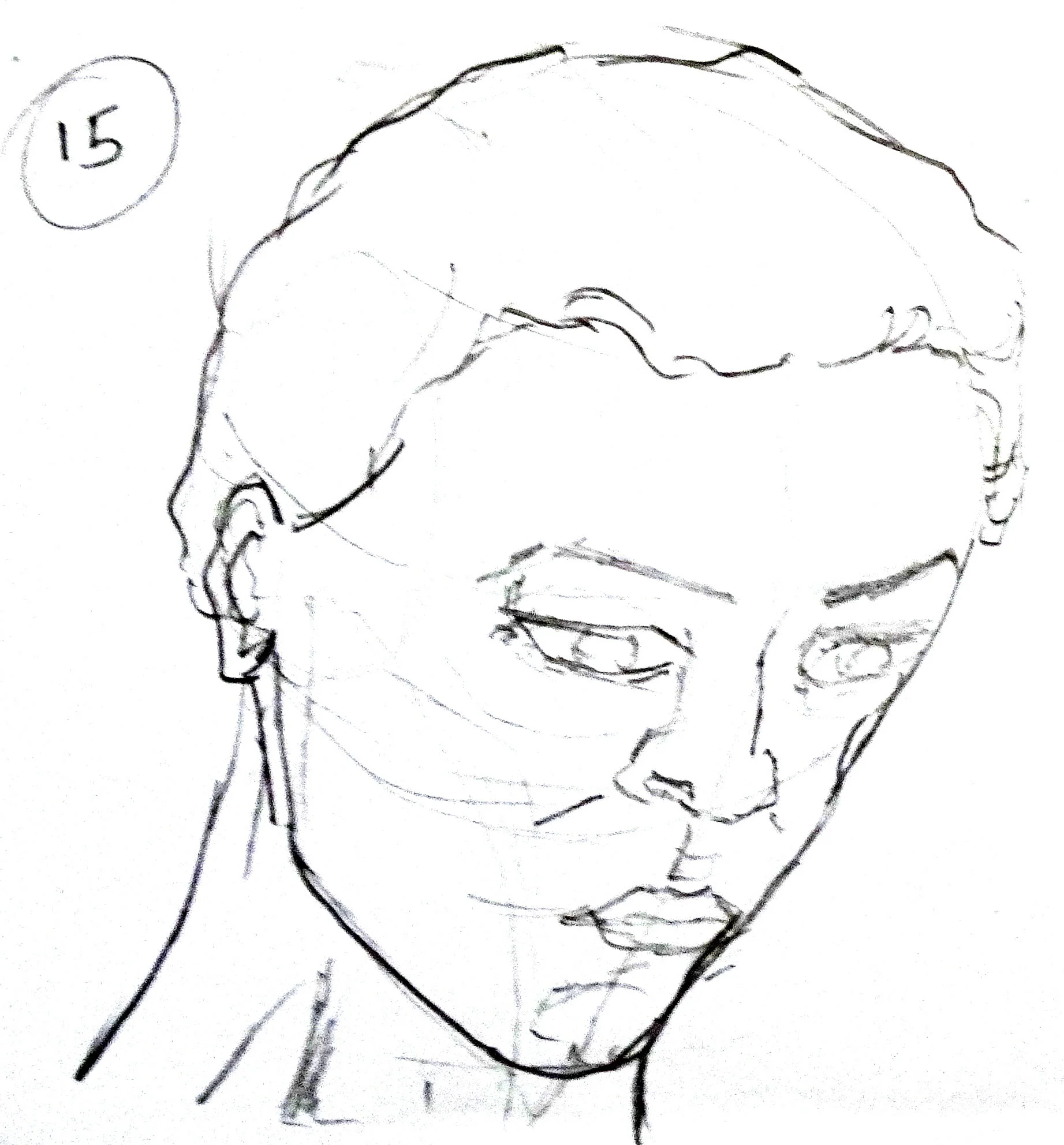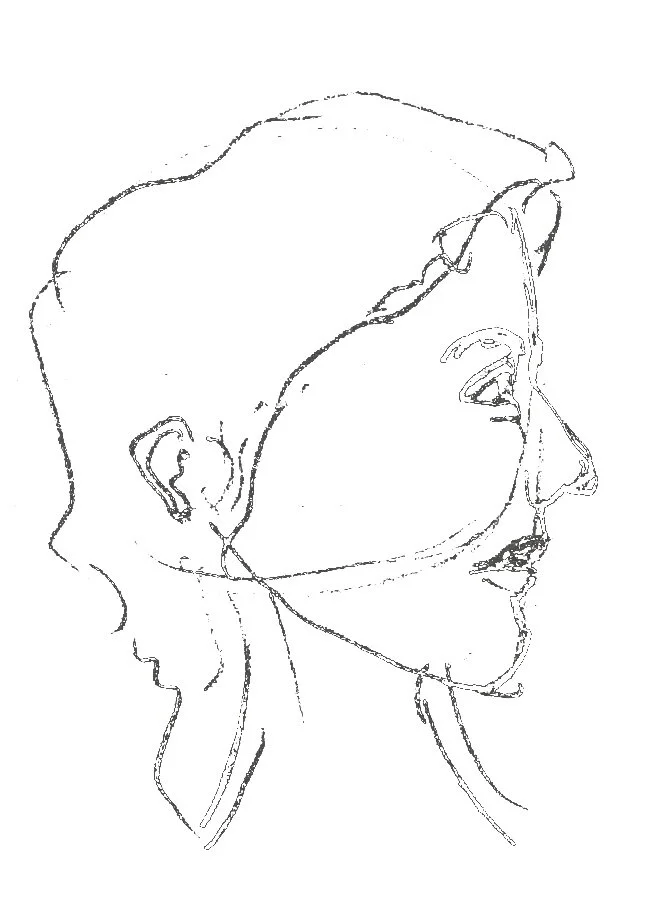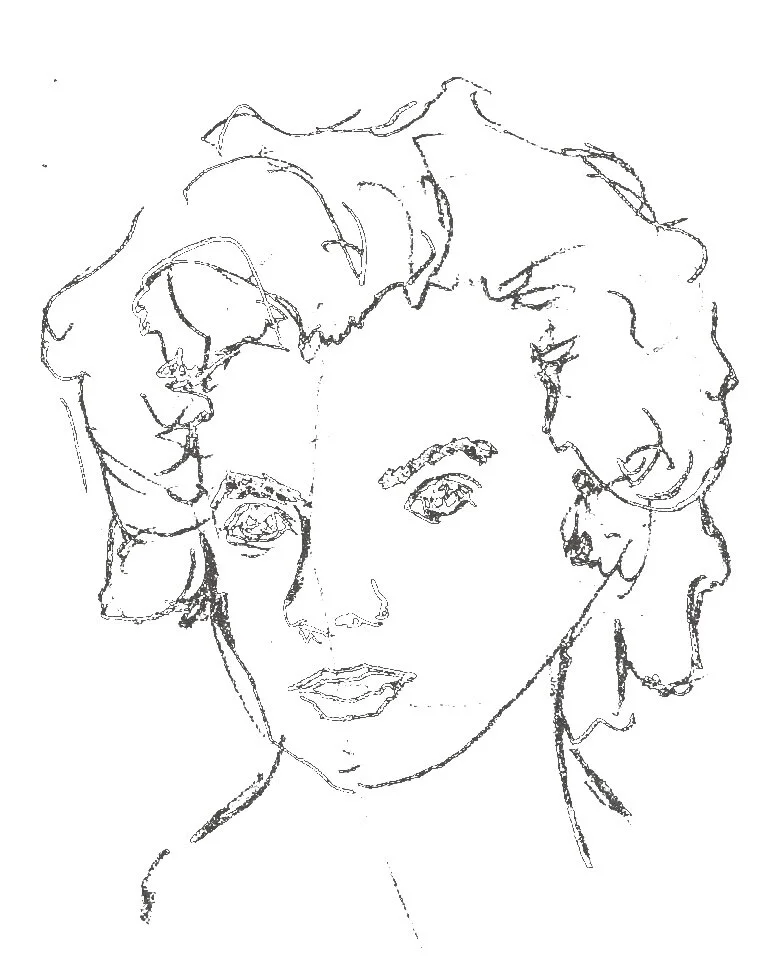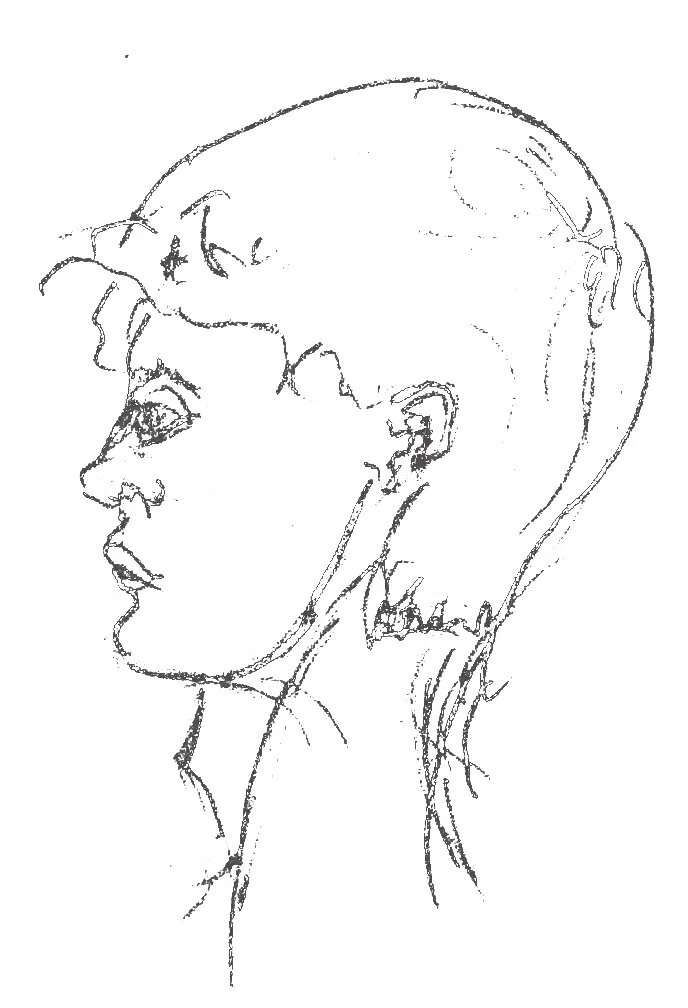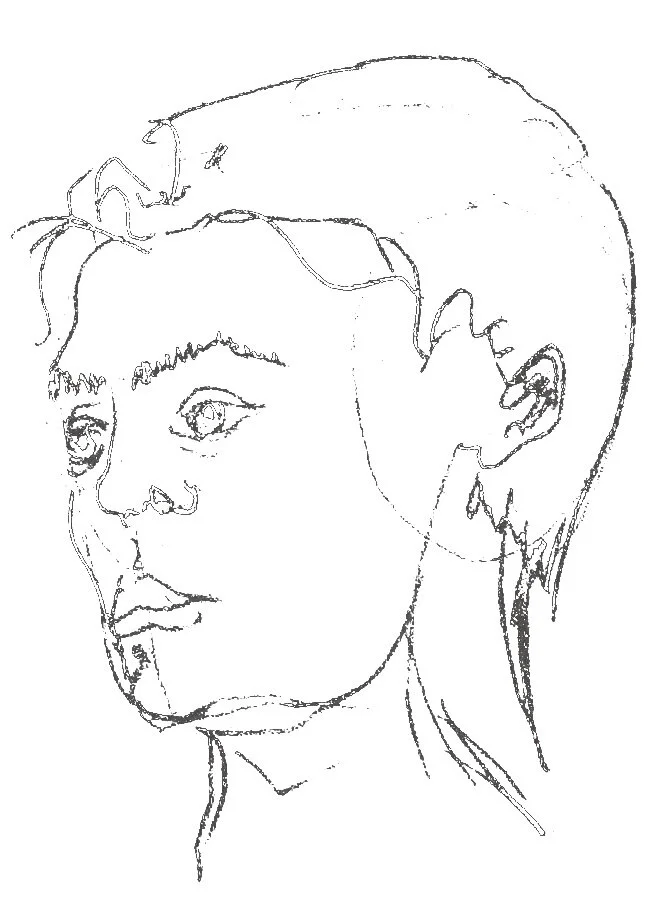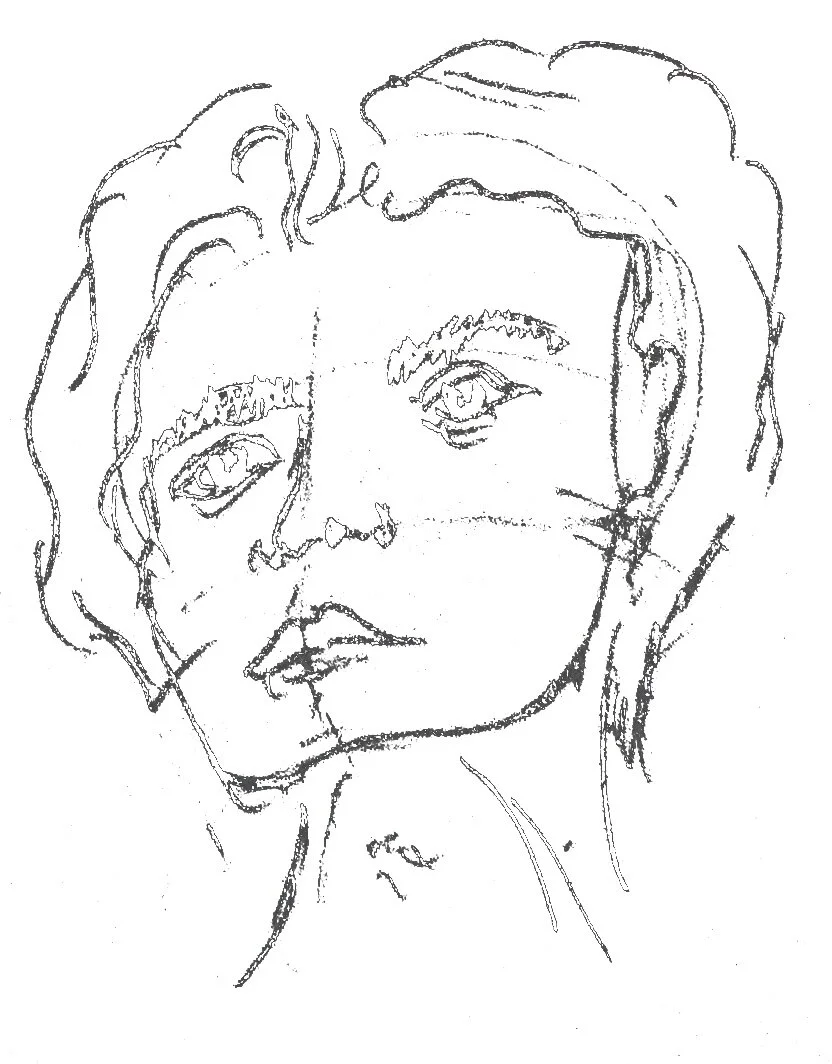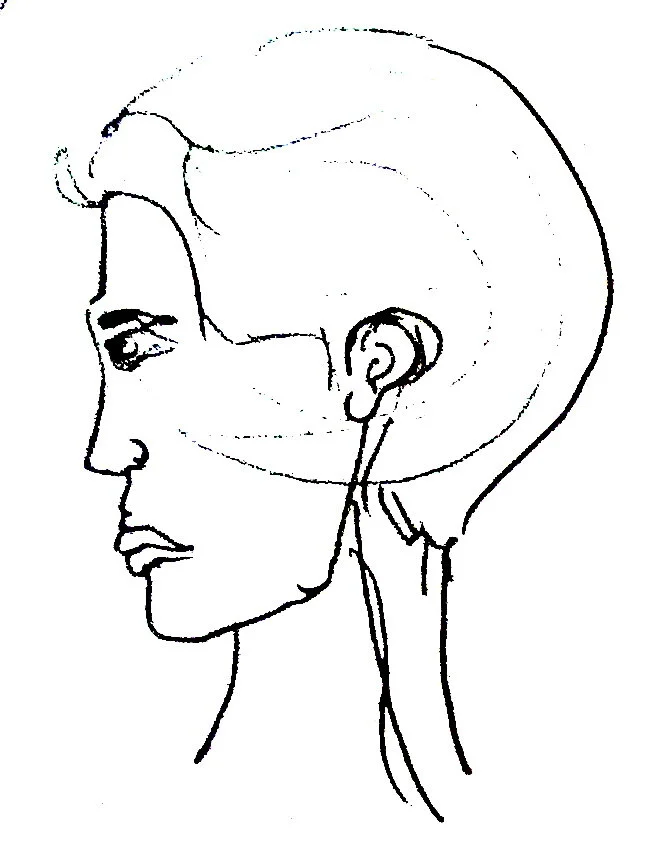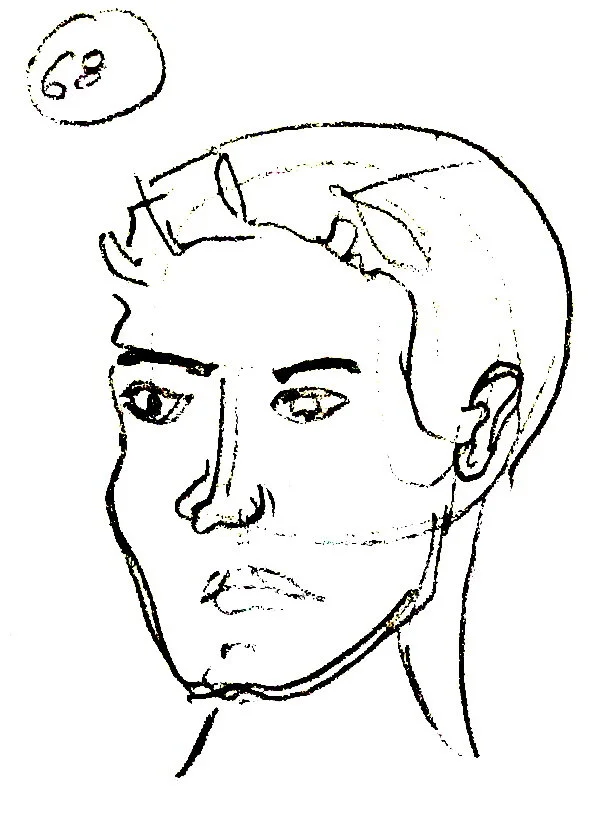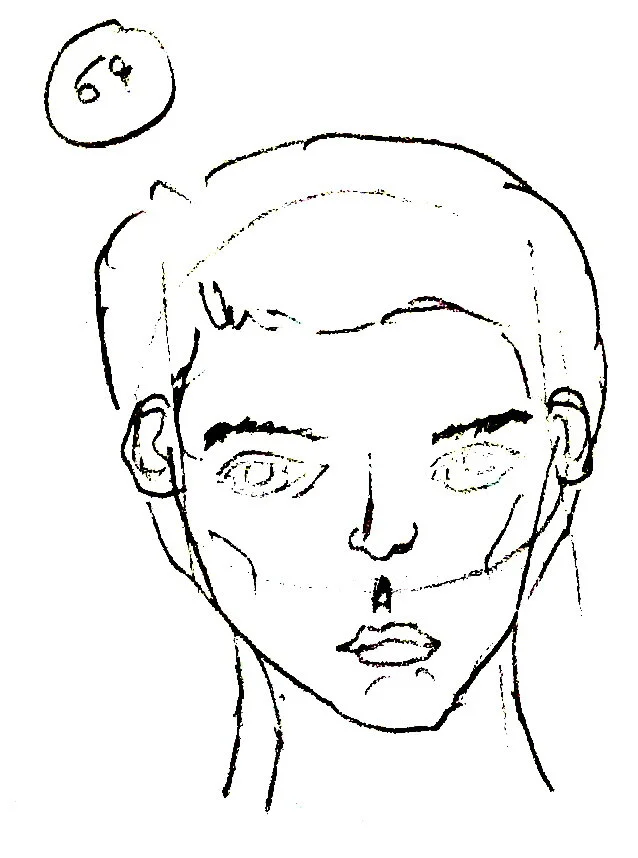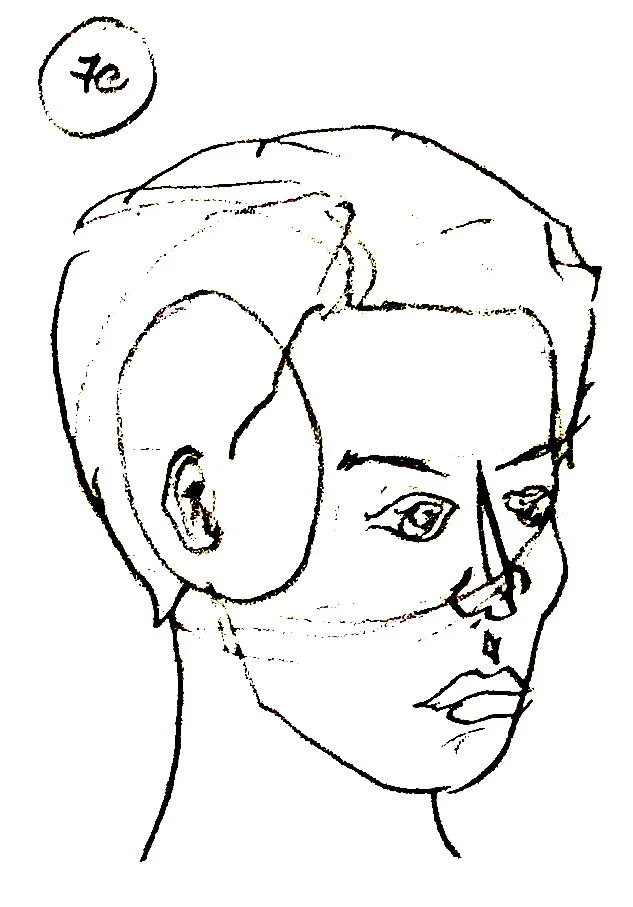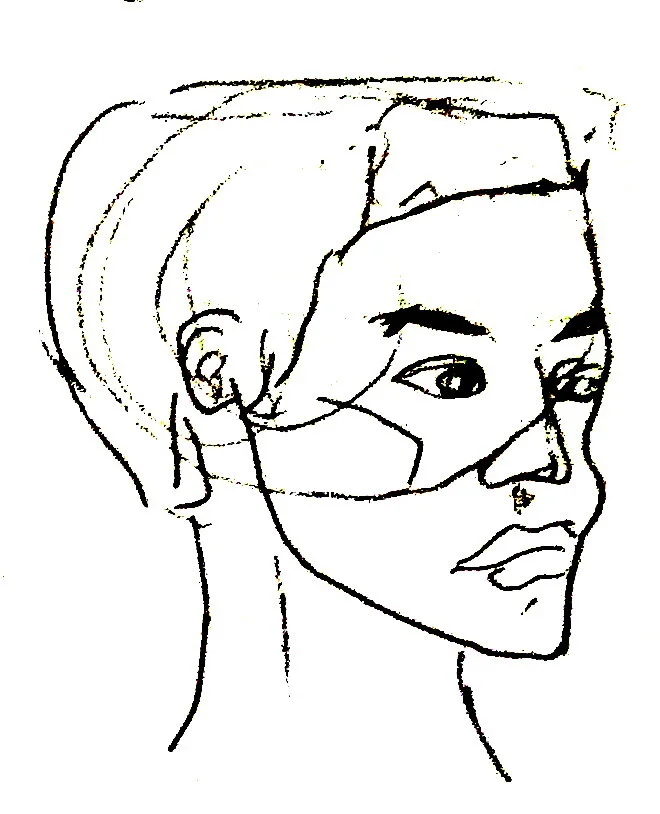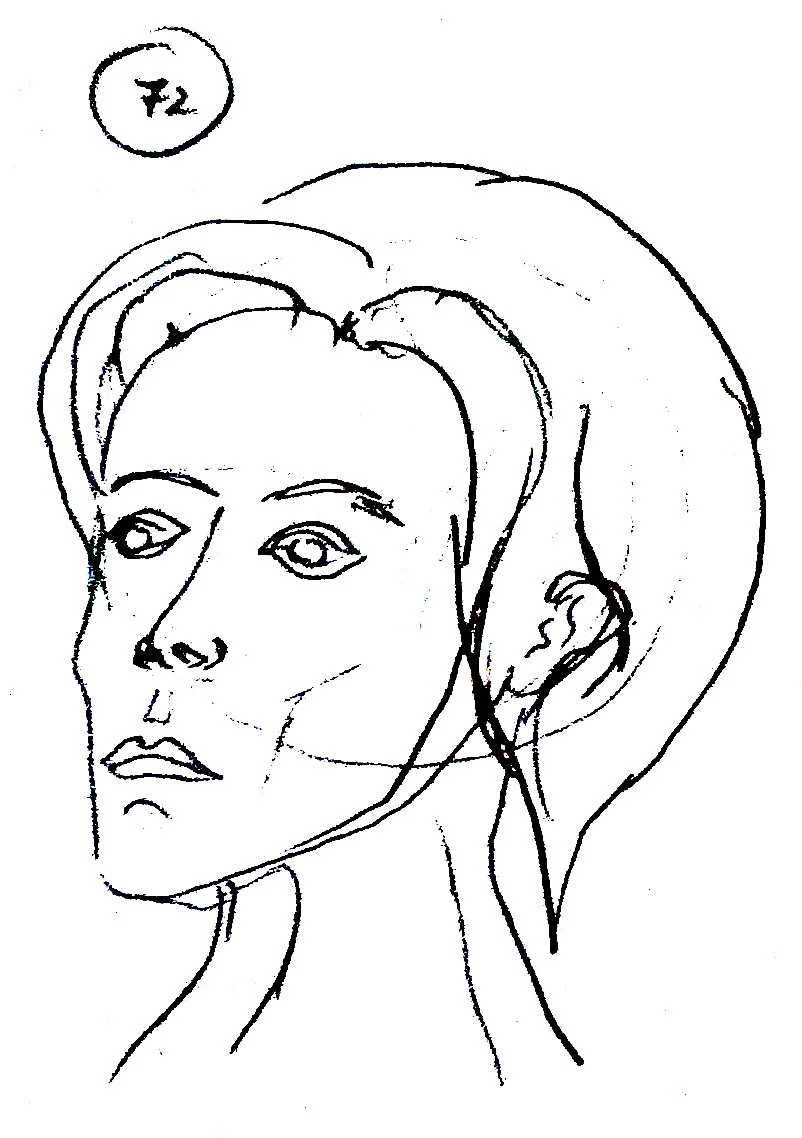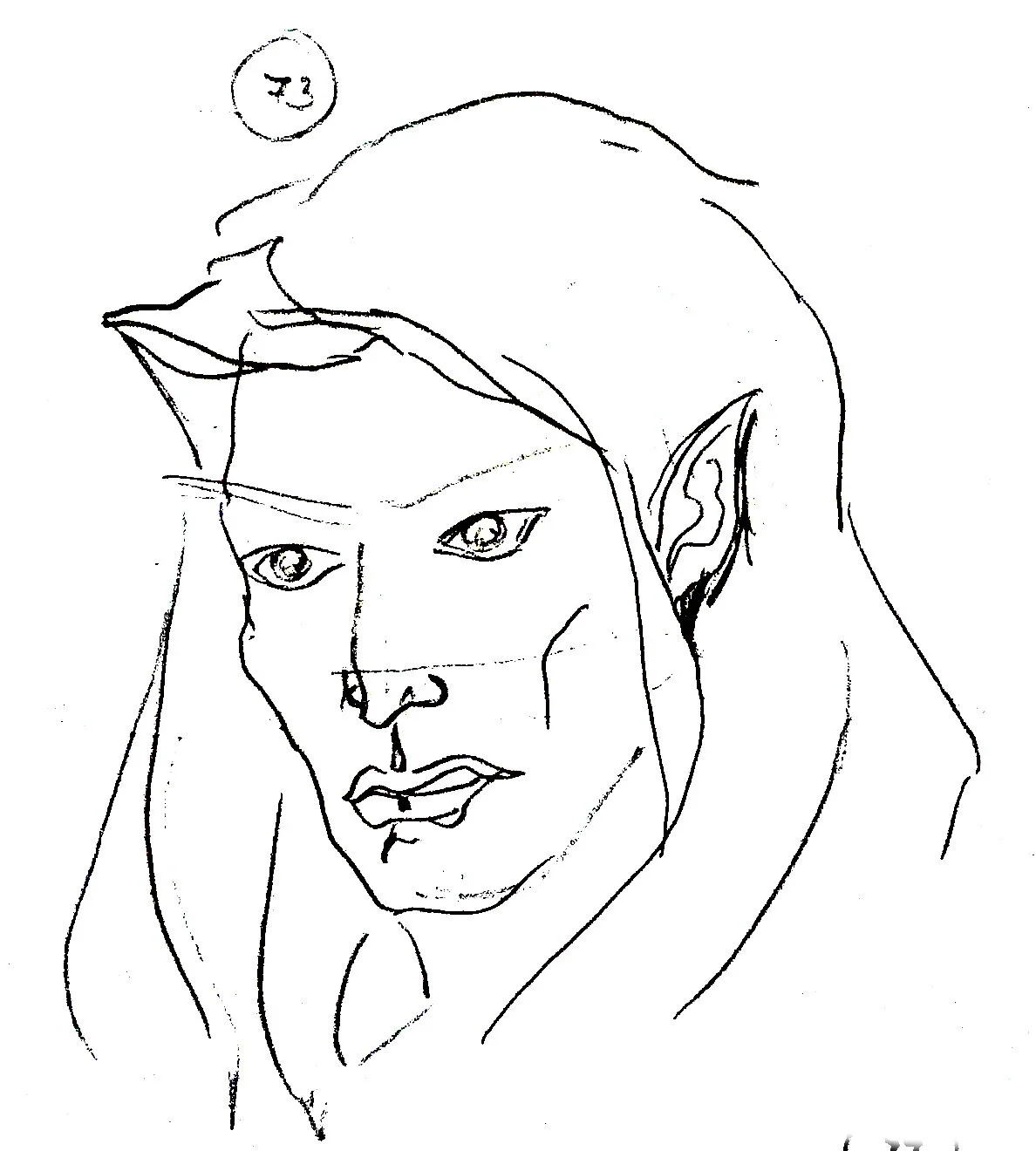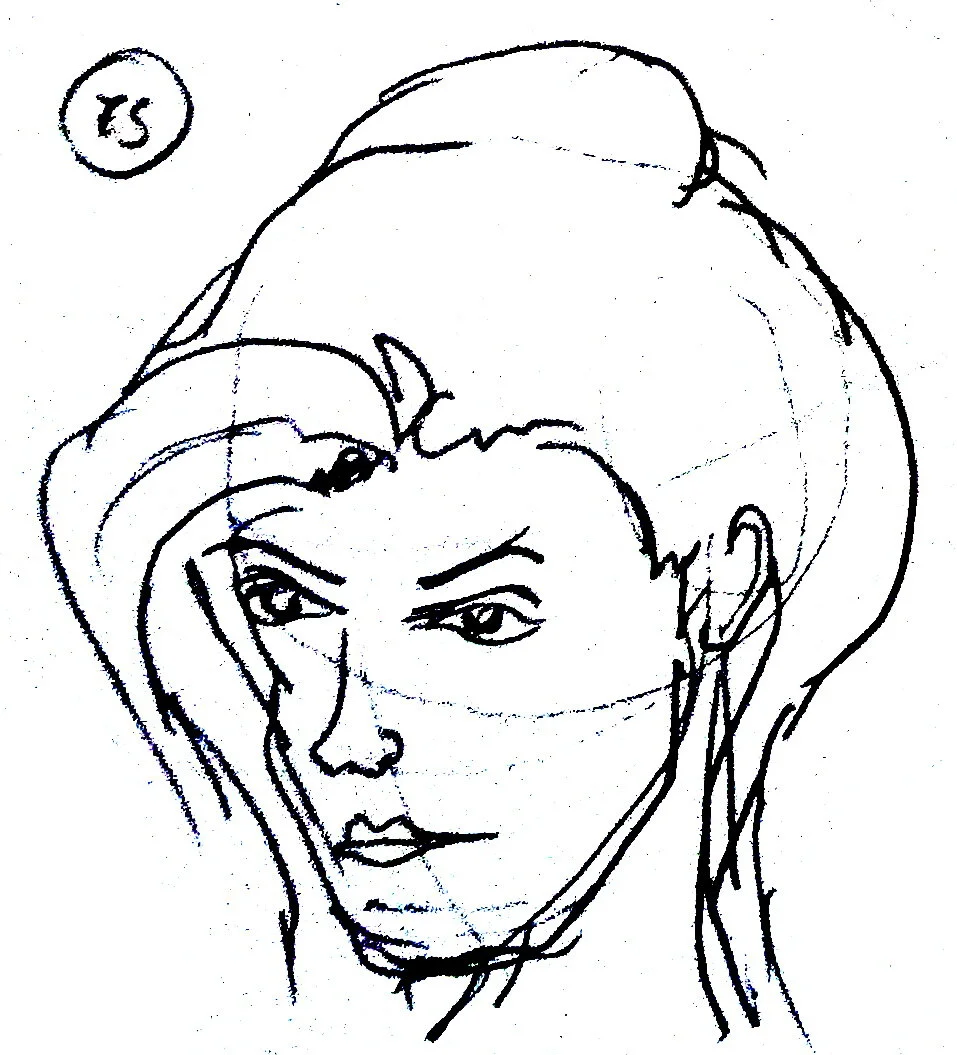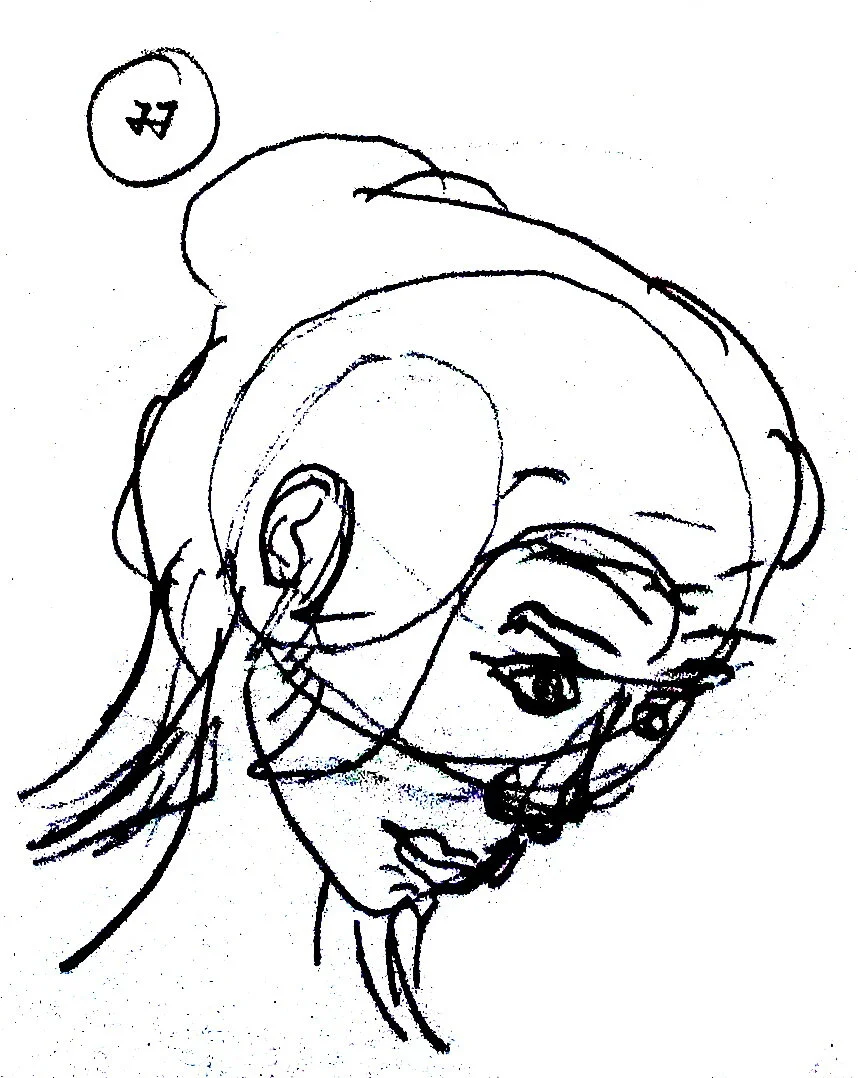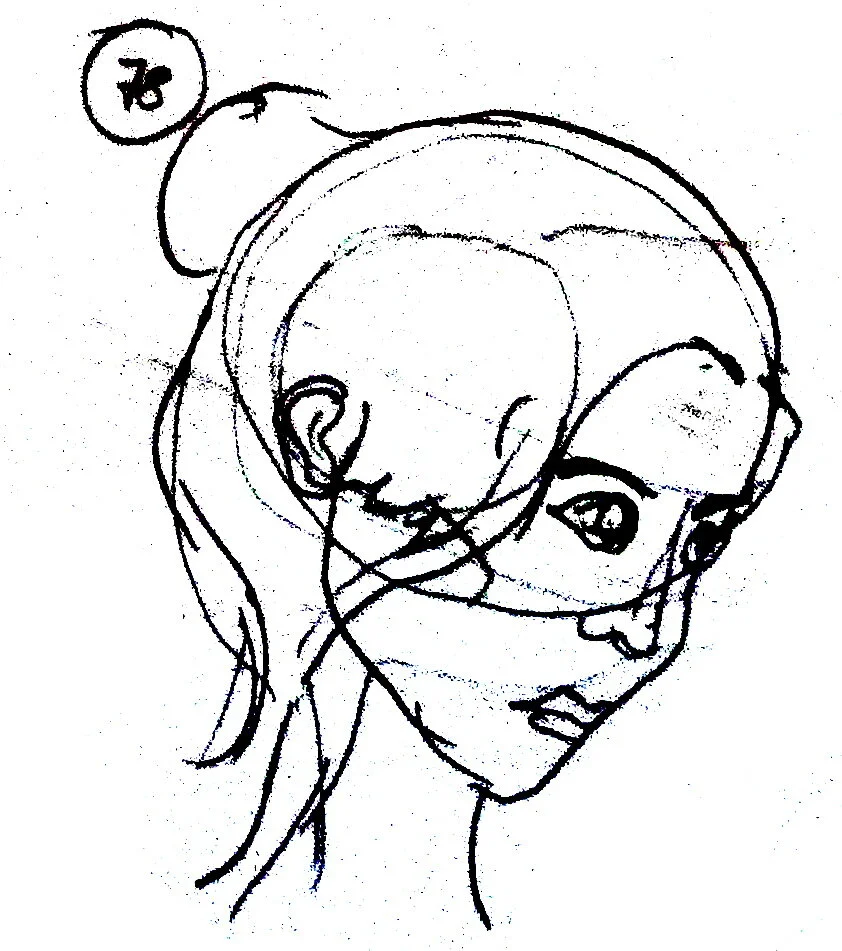Practice makes perfect
Does practice make perfect?
I don’t know. I don’t even know what this adage means. You might as well say working hard is important. Not doing anything of course is not going to improve anything. So, where exactly do we stand? Before I start rambling, I would like to share a small snippet about the Florentine painter, architect and sculptor Giotto.
Pope Benedict XI in Lombardy wanted to commission Giotto to make some paintings for the Saint Peter’s Basilica in the Vatican. A emissary was sent to the different masters to take back a sample to the pope. Giotto marked a plane canvas with a drawing of a perfect red circle completely unaided. Though this seemed like a jest to the emissary, the pope realized that it was a concise way for Giotto to demonstrate his enormous technical skill, probably requiring years to master.
I struggle with drawing human faces as well as human gestures or poses. Both of which were vital to what I was trying to accomplish. I had seen concept artists portray characters in different settings and poses to tell a visual story. I wanted a representation/method to visualize and draw my own scenes. My aim is to make a small book that is a combination of art and storytelling (something like a graphic novel).
It is a lot less challenging to draw from photographs or screenshots, but having flexibility in making your characters assume different poses is very difficult. Moreover, to draw the same face from different orientations while keeping it consistent is very challenging and demanding. This motivated me to go to the fundamentals. To try to understand the anatomy and get familiar with the process. The aim for me this time was not to make good looking drawings, but to work the motions into my muscle memory.
Looking at things differently
My source of learning is Youtube. I highly recommend the gesture drawing series from Stan Prokopenko. And in addition, everything else on that channel. As he puts it, gesture/rhythm/action/flow is simply the motion or movement of the body. Specifically, he is trying to emphasize the importance of gesture over detail in the sketch. An important distinction that I usually miss. While drawing from a reference, we implicitly copy some of the gesture whether we are aware of it or not. This doesn’t help me at all in drawing a character from different angles. I usually tend to focus on the detail as opposed to the underlying form.
I think that we look at things through a filter. It is really hard to pay attention to something as it exactly is. For example, a circular cylinder has a circular cross-section. However, while drawing a cylinder, the shapes we use are always ellipsoidal. Sometimes its hard to really see an ellipse while imagining a circle. Perhaps this sounds trivial or is it not clear. What this specifically translates to, is that things are counterintuitive to how we imagine them. Drawing a face from above the head or from below the chin is difficult. Depth is exaggerated here, making it counterintuitive to draw. As an exercise, just fold your arm in an odd way and try to look at it from different angles, you will see that its shape simply looks weird.
More practice is not always better
In my opinion the key thing that the adage (practice makes perfect) assumes is that you have infinite motivation to keep practicing. This is not going to work in reality when you have other things to do. I decided to create a exercise/challenge for myself that is measurable and bound with a finite end. That way I can feel that I completed something. Moreover, having a target also allows me to plan and prepare for it. I can also find the motivation to complete a challenge with a definite end.
I designed two exercises, first, to draw 100 faces from different orientations and second, 500 different poses. I did not expect to come out of it drawing perfect figures, but rather I saw this as a test to gauge how much I improve by this exercise. Each drawing was designed to take between 30 sec to 10 min. This would ensure that I can complete the exercise in 3-4 months, drawing a couple of hours every week. These exercises were designed to improve how I read shape and form. Failure would simply be not completing the exercise/challenge. This takes a lot of pressure off, allowing me to stop questioning myself and simply focus on hitting my quotas.
Do these exercises help?
The trivial answer is Yes. But moving past that, the real question is how much did it really help? First, it does improve the way I look at things. Now with little effort, I think I can focus my attention to map the key lines in someone’s gesture. I also have a better foundation for drawing faces. Second, my control of the pencil is also much better. I find it easier now to draw moving my shoulder as opposed to drawing from my elbow. This gives me more control on drawing longer lines in one fluid motion and I also have more confidence in my lines.
There were some negatives from doing this exercise too. Primarily that it reinforces bad habits. Repeatedly practicing a common mistake only made me repeat the mistake more often. There were two competing aspects that were difficult for me to grapple with. It is important to periodically to check your work and reflect on it. It would also help to have a tutor judge my drawings to catch these mistakes. But in stark contrast to this, adding additional things to do makes the whole exercise more complicated. I would have to change from a couple of evenings of lazy sketching at my desk to trying to make appointments with a tutor or attending a class. My top priority here is to complete the exercise. Adding additional things to this would risk the exercise fizzling out (as with so many other projects that I start and never get back to)!
The final results are not appeasing and are not of sufficient quality to merit being part of a finished art piece (like a graphic novel). But naturally, I did not expect to have mastered gesture drawing in a few months. I simply have to practice more, I guess.
Thinking outside the box
When I think about when I will be ready to make my graphic novel, I can see a mountain of work ahead of me even before I can start with the first page. I am a total novice at drawing anything. I have to get better at drawing gestures, faces, facial features, hands and fingers, women, men, children, robots, etc. I have to learn the basics of lighting and shadow, reflections, water, clouds and other environmental features. I have to think about how cloth blows in the wind, drawing places, vehicles and so on. Realistically, I will never get to the point where I can be good enough, while only working on it a few hours every week. I also worry about this becoming a job and not really a hobby. This prompts the question: do I want to become good at drawing things? Or do I want to make my graphic novel? The answer to me is to do both separately. I do enjoy drawing and want to get better at it, but I have to face the reality that this approach will not get me my graphic novel.
All is not lost. I’ve recently been working with Blender and I’m trying to explore what I can do with digital tools. The pitch is this: I design the scene as a 3D model borrowing freely available assets online and I drop in a character model for my hero (that I can position in different posses). Next, I can move a camera about and set up the lighting to get the scene exactly as I want. Finally, I can make a screenshot of this and add in details, color and other missing elements. This approach keeps consistency in form, allows for control over lighting and gives me freedom to move characters about for different scenes. I have found videos of manga artists using a similar set up to meet their demanding weekly deadlines. Well, this is an idea and I’m sure it comes with its own challenges. But, I feel excited at the prospect of adding another skill to diversify my options. Learning new tools is also quite fun.
For a long time I felt averse to adopting a strategy like this or using digital media at all. It felt quite a bit like cheating to me. I used to see drawing as a testament of skill and that was the primary criteria that mattered to me. But more recently my views have changed quite a bit and I feel that I am more open to accepting different art. I highly recommend the show “Abstract: The Art of Design” on Netflix. I found it inspiring and it really helped me get a different take on things.
